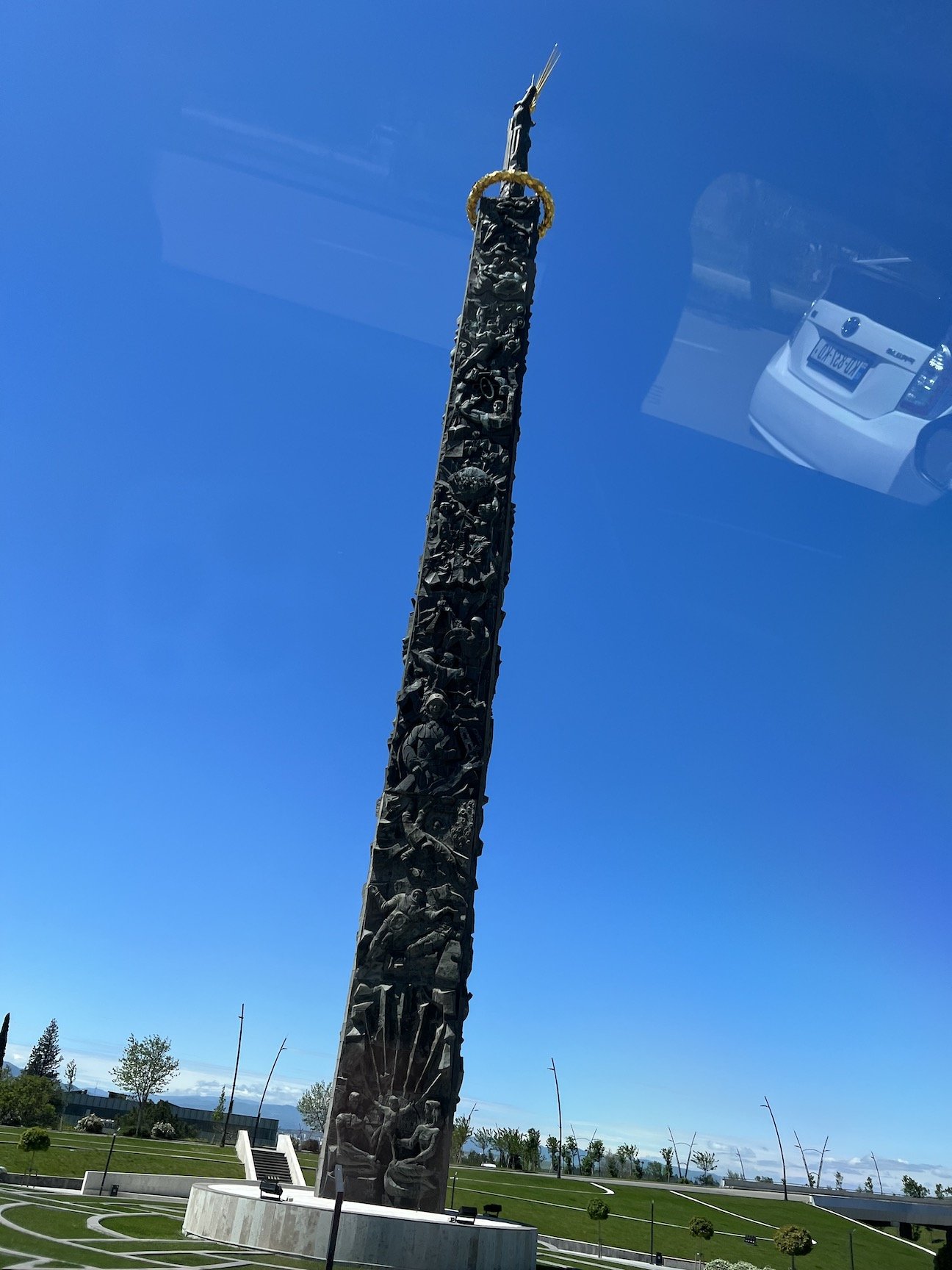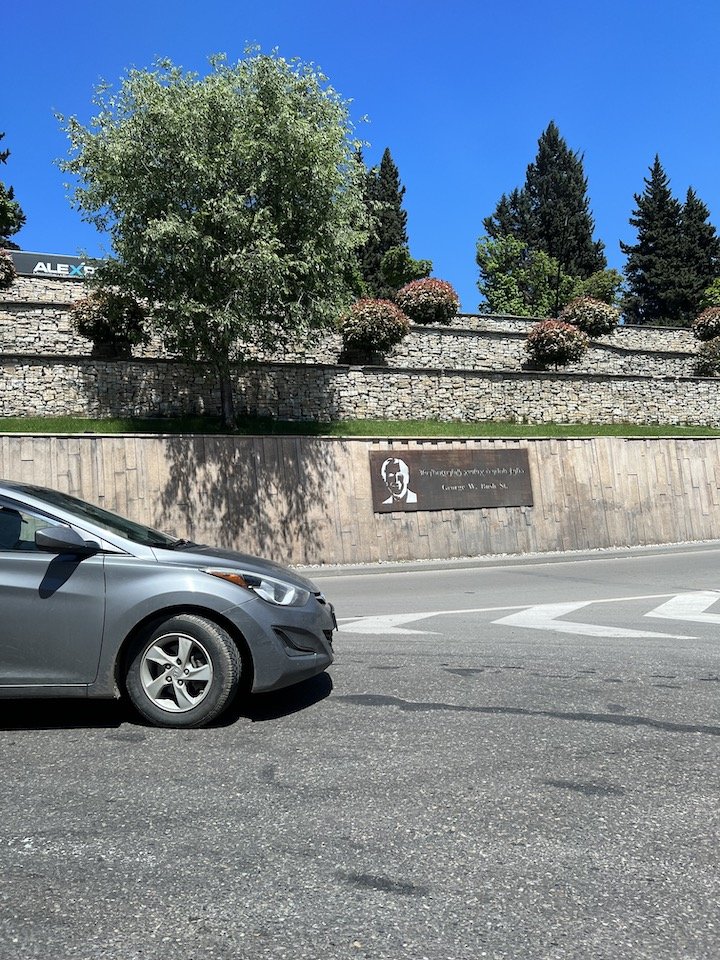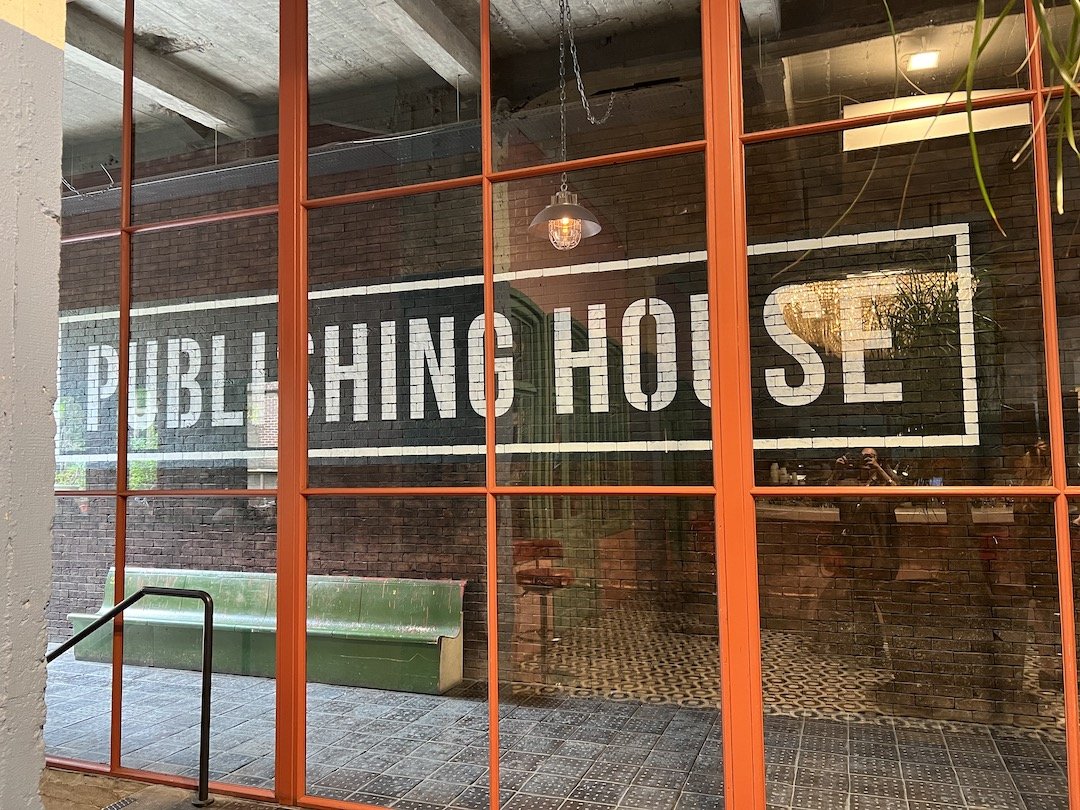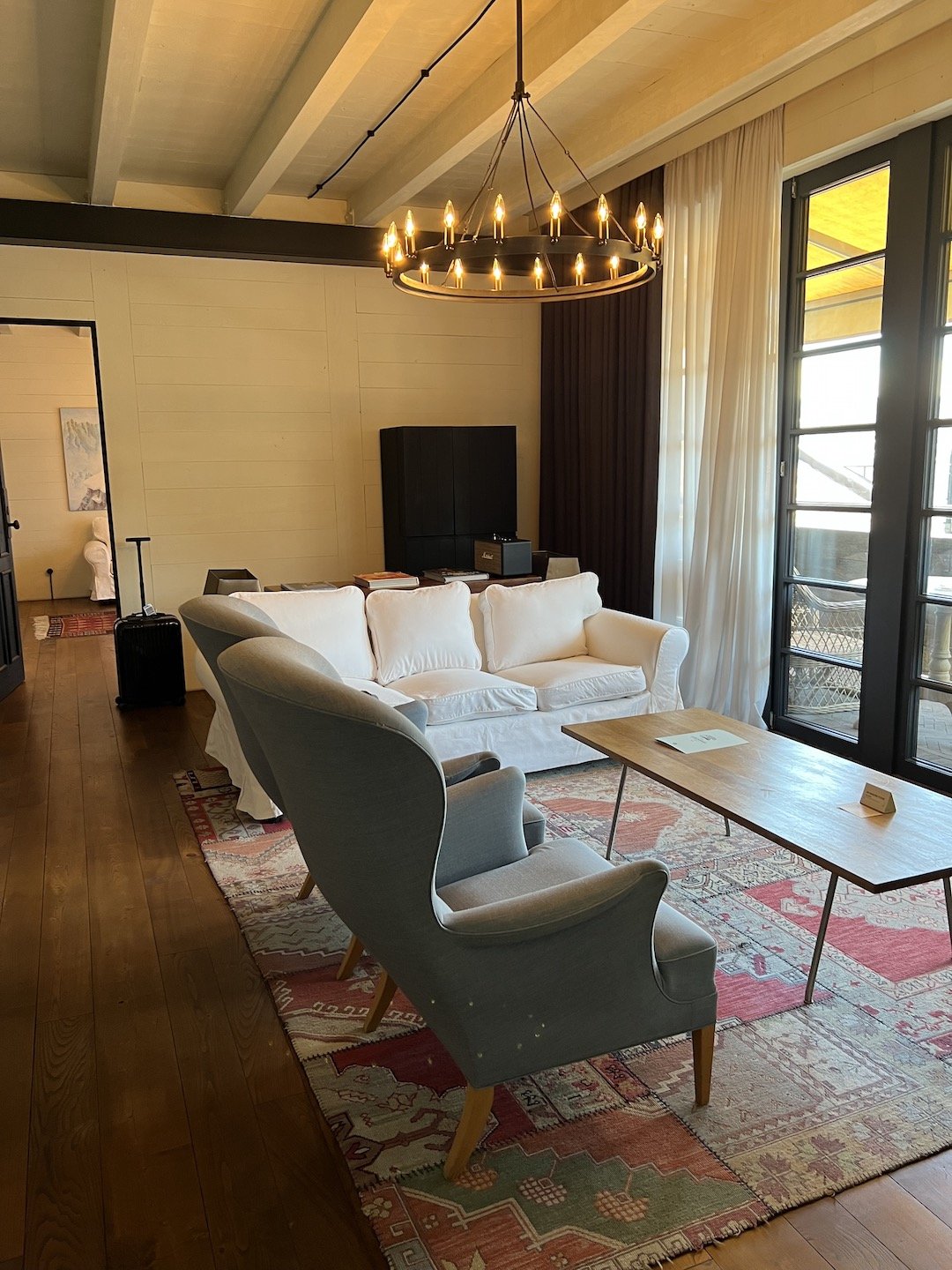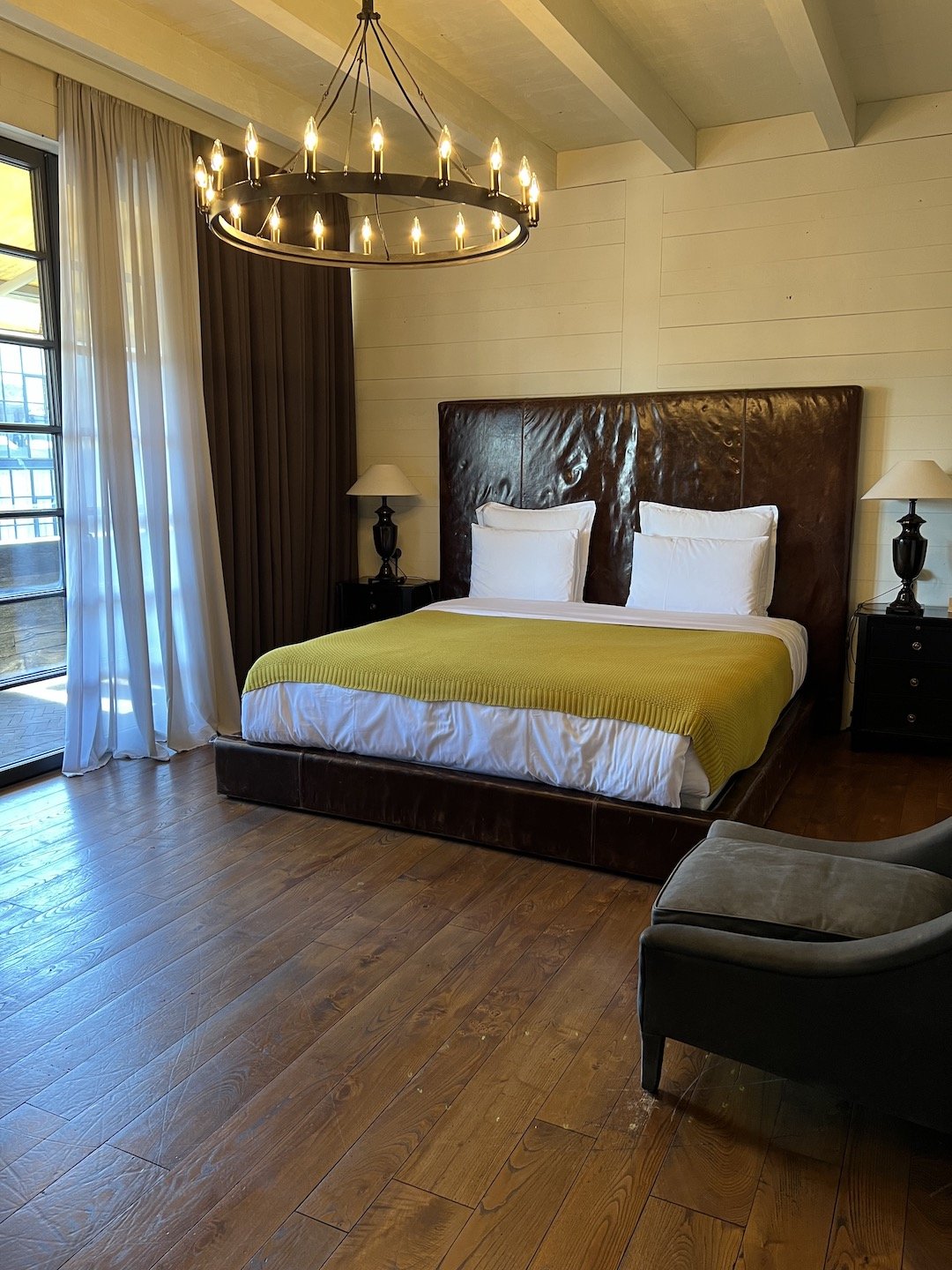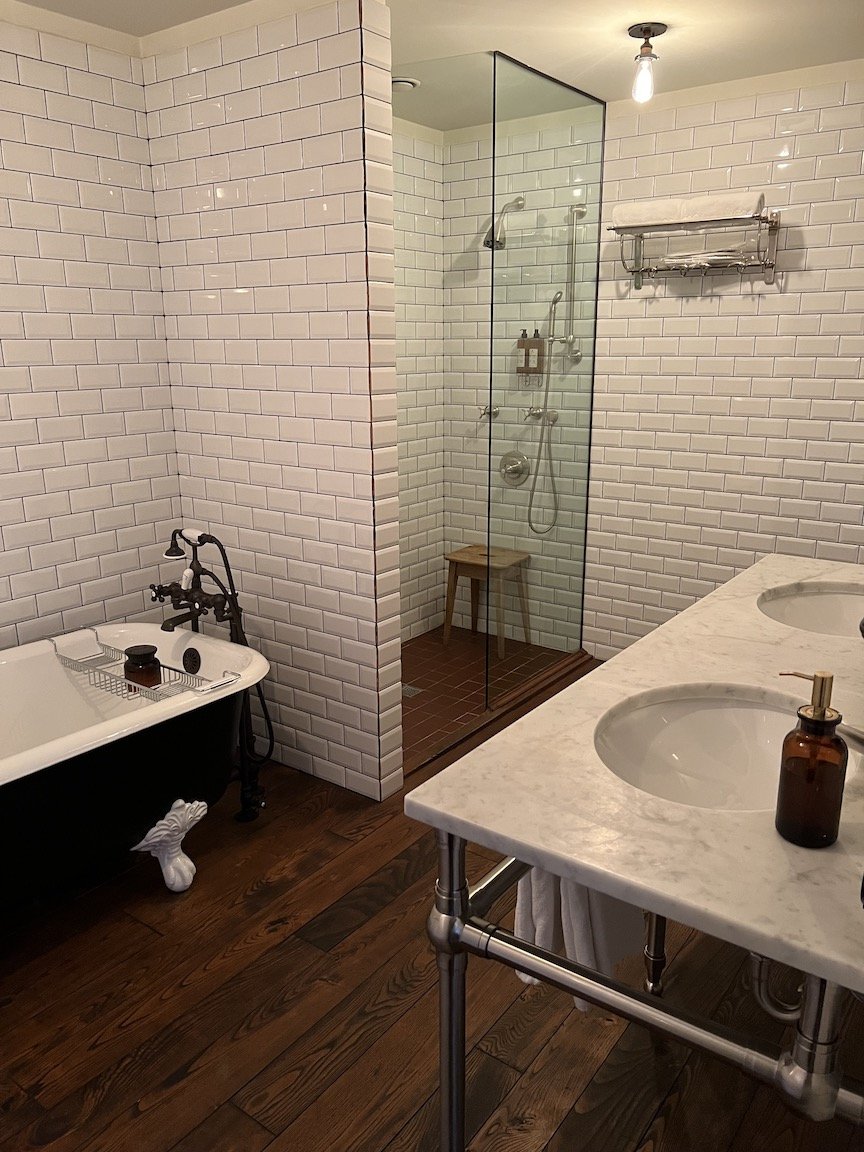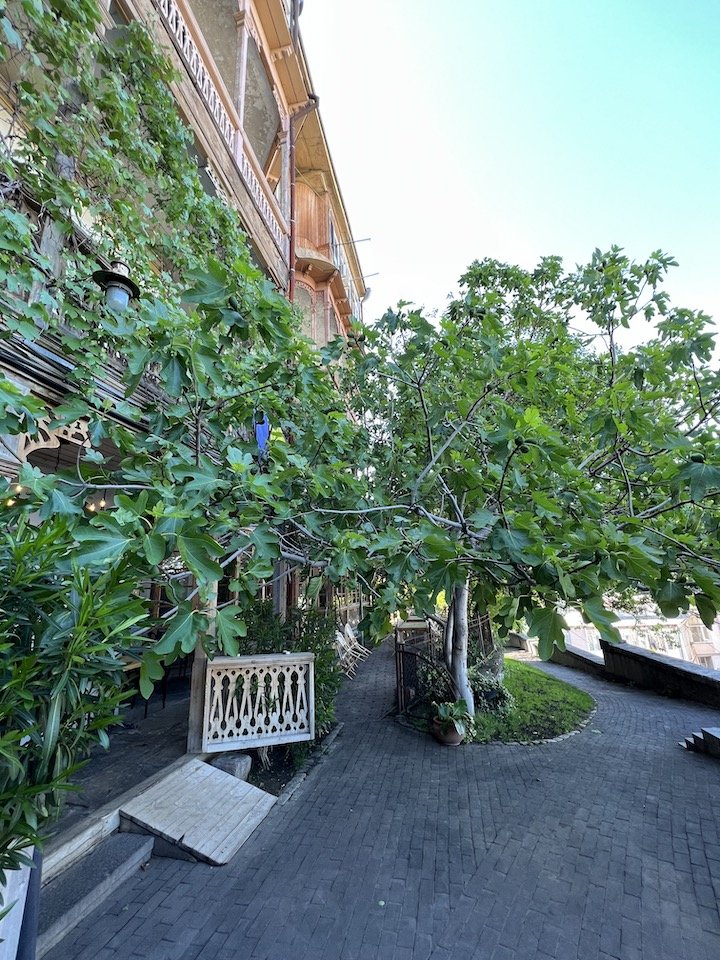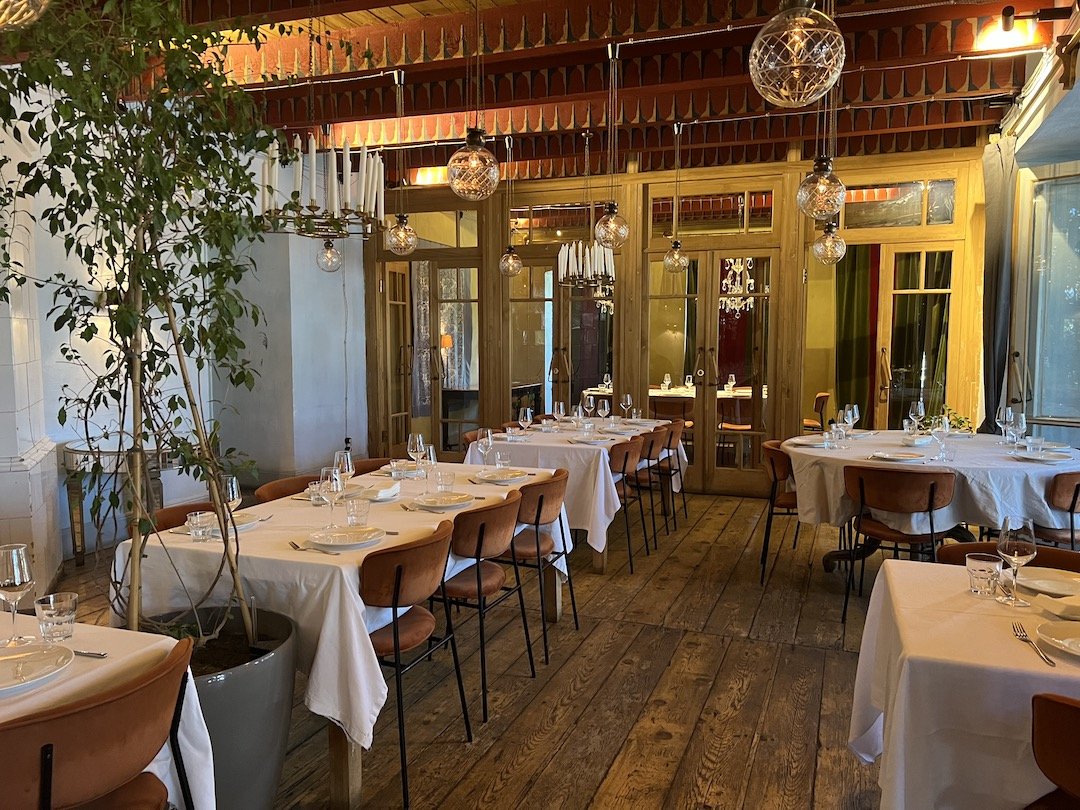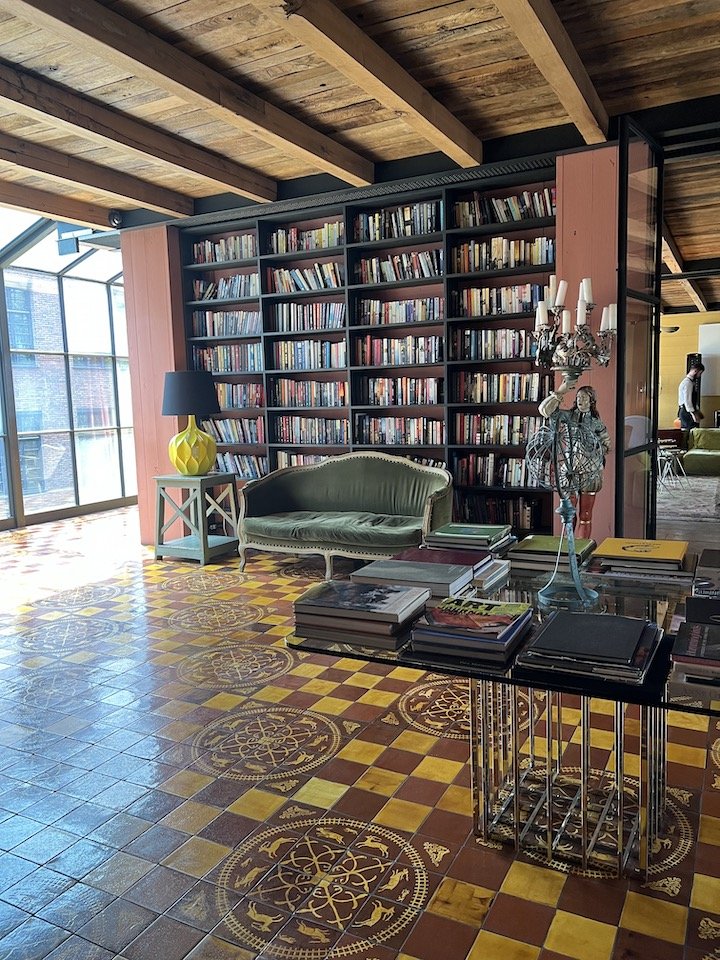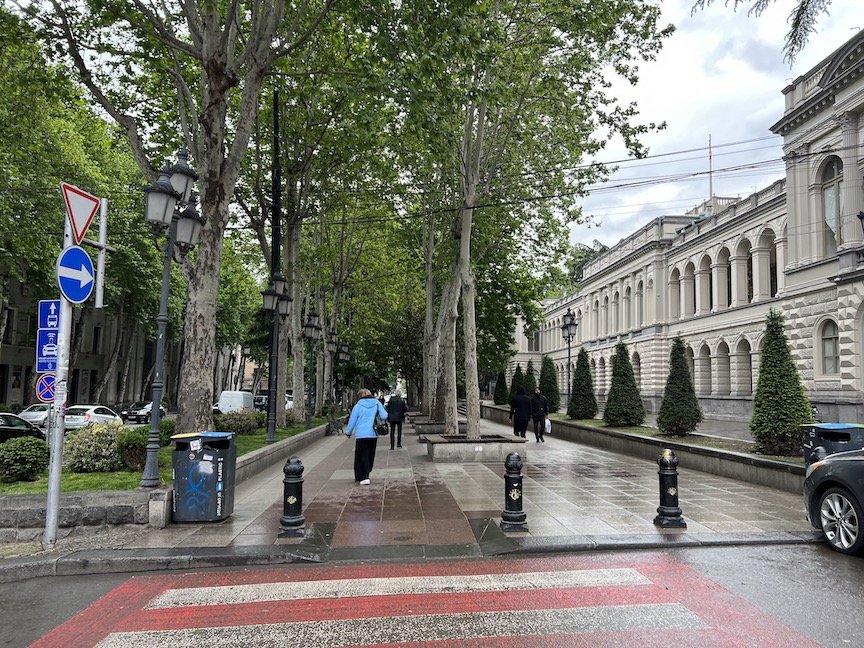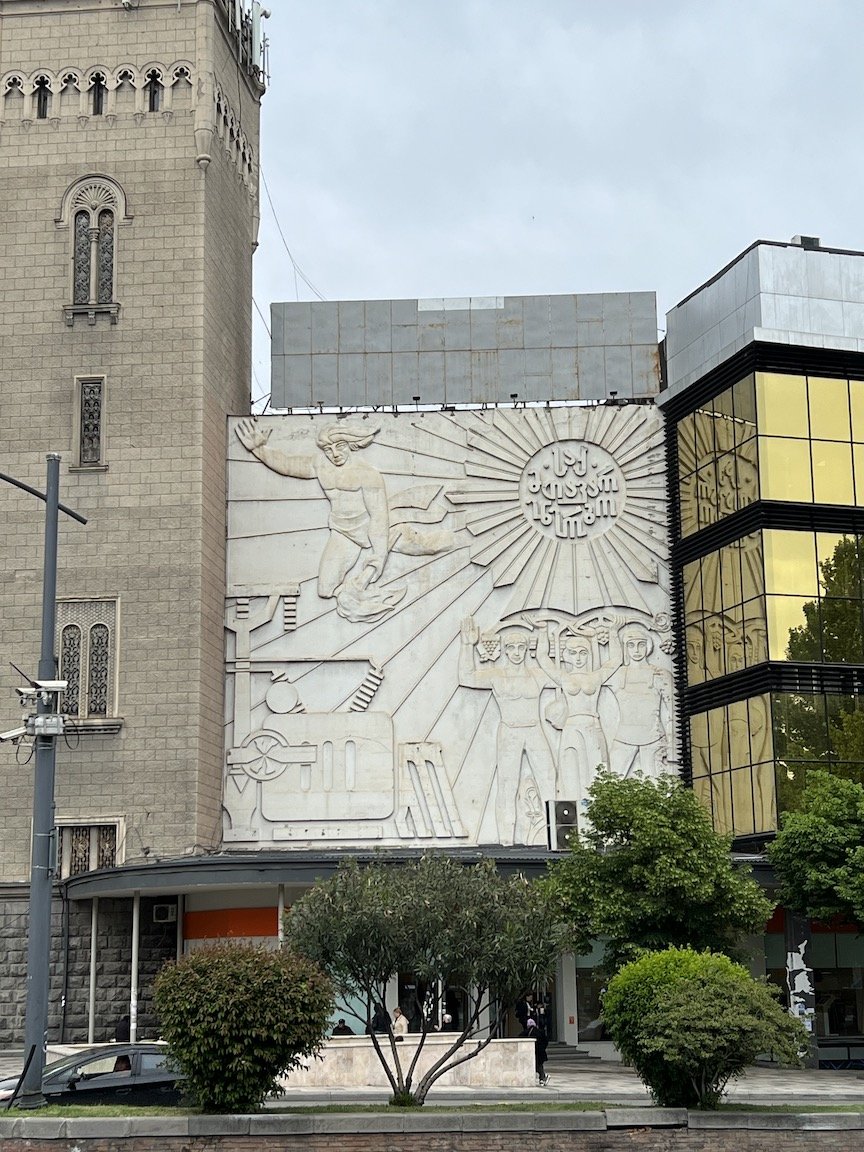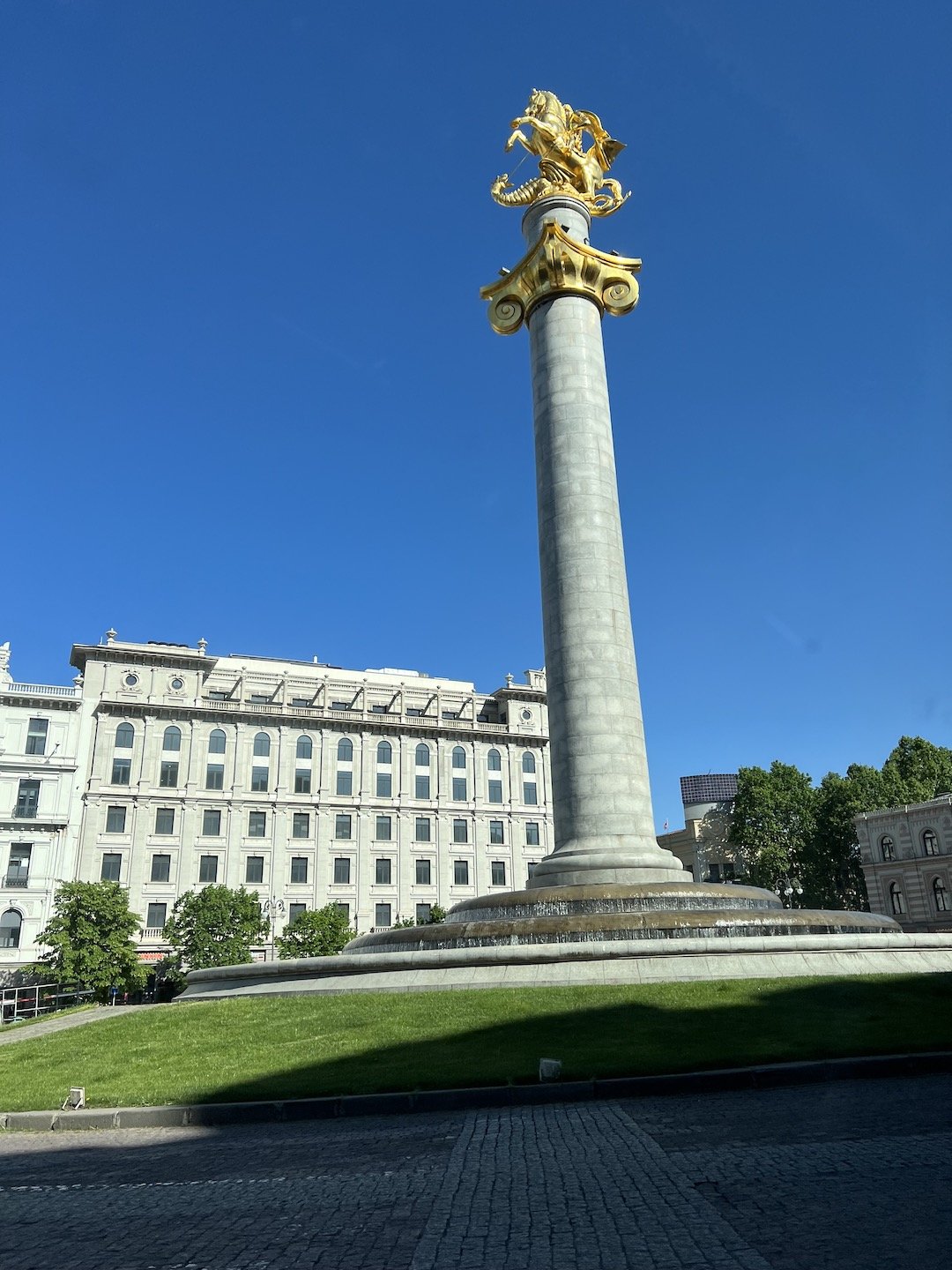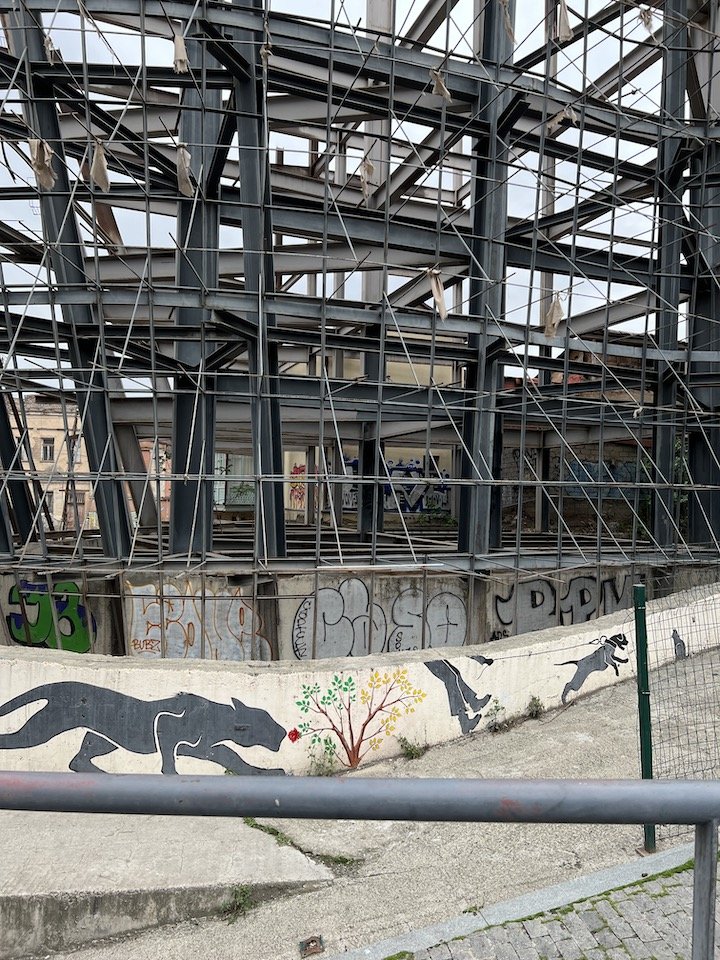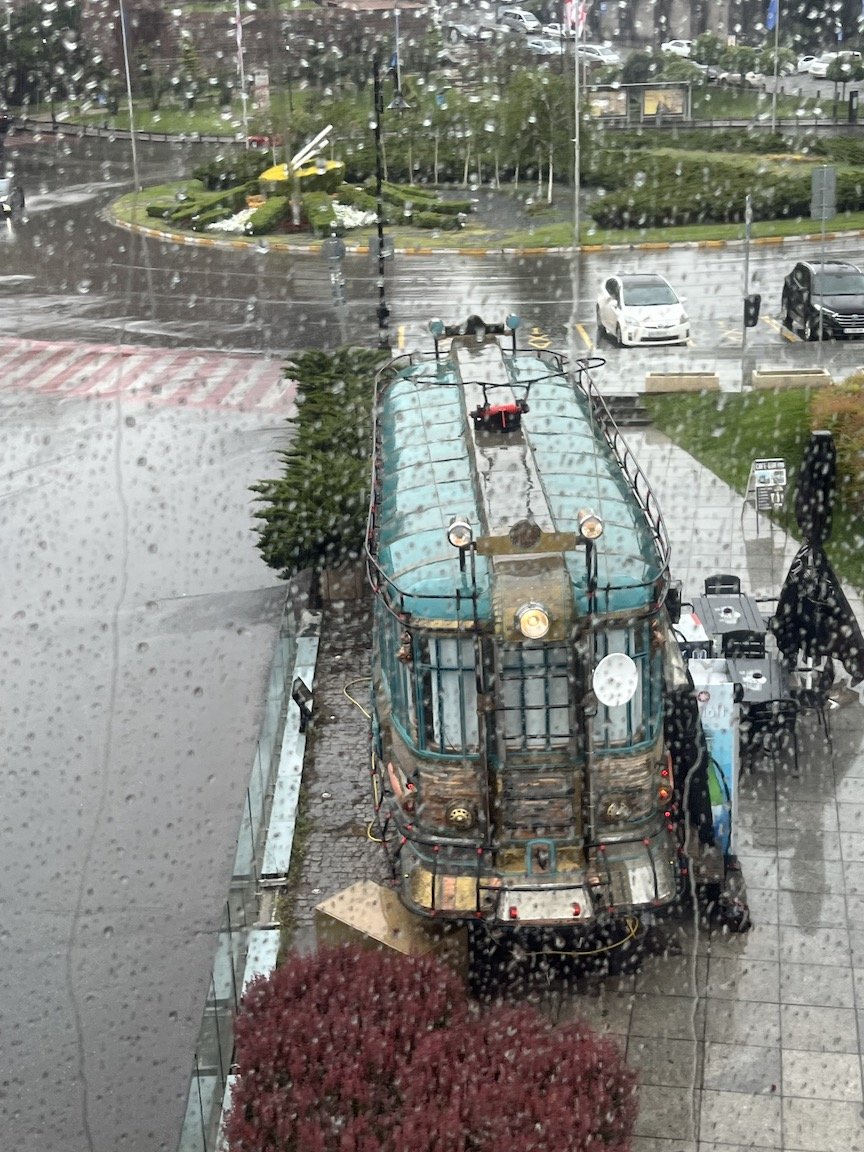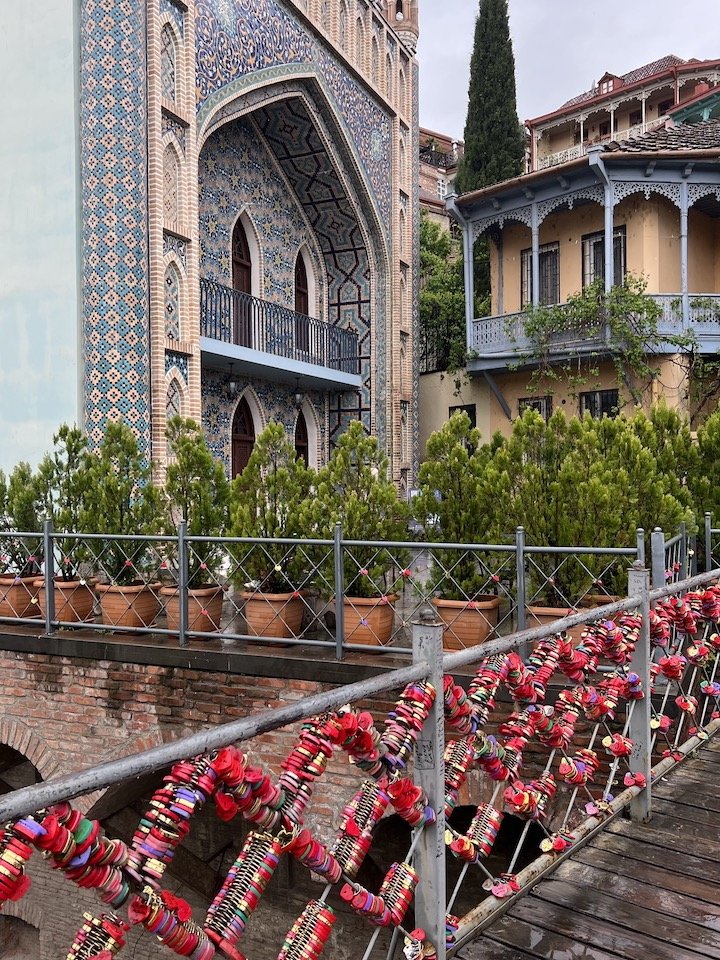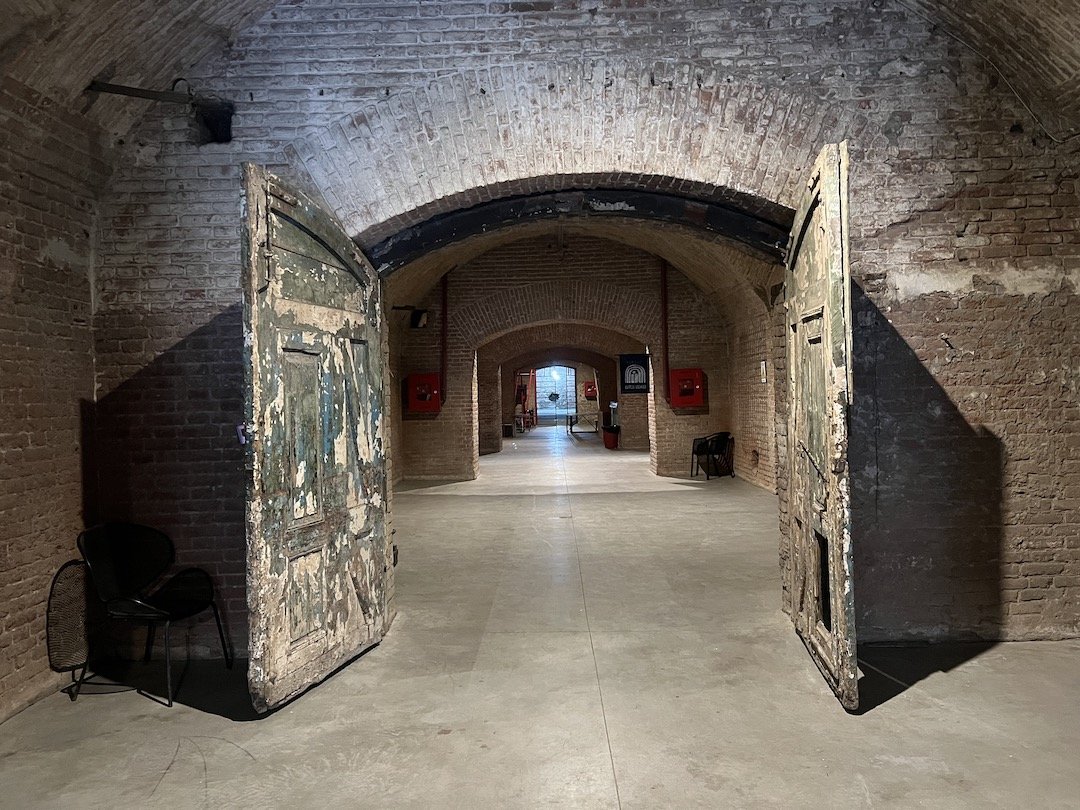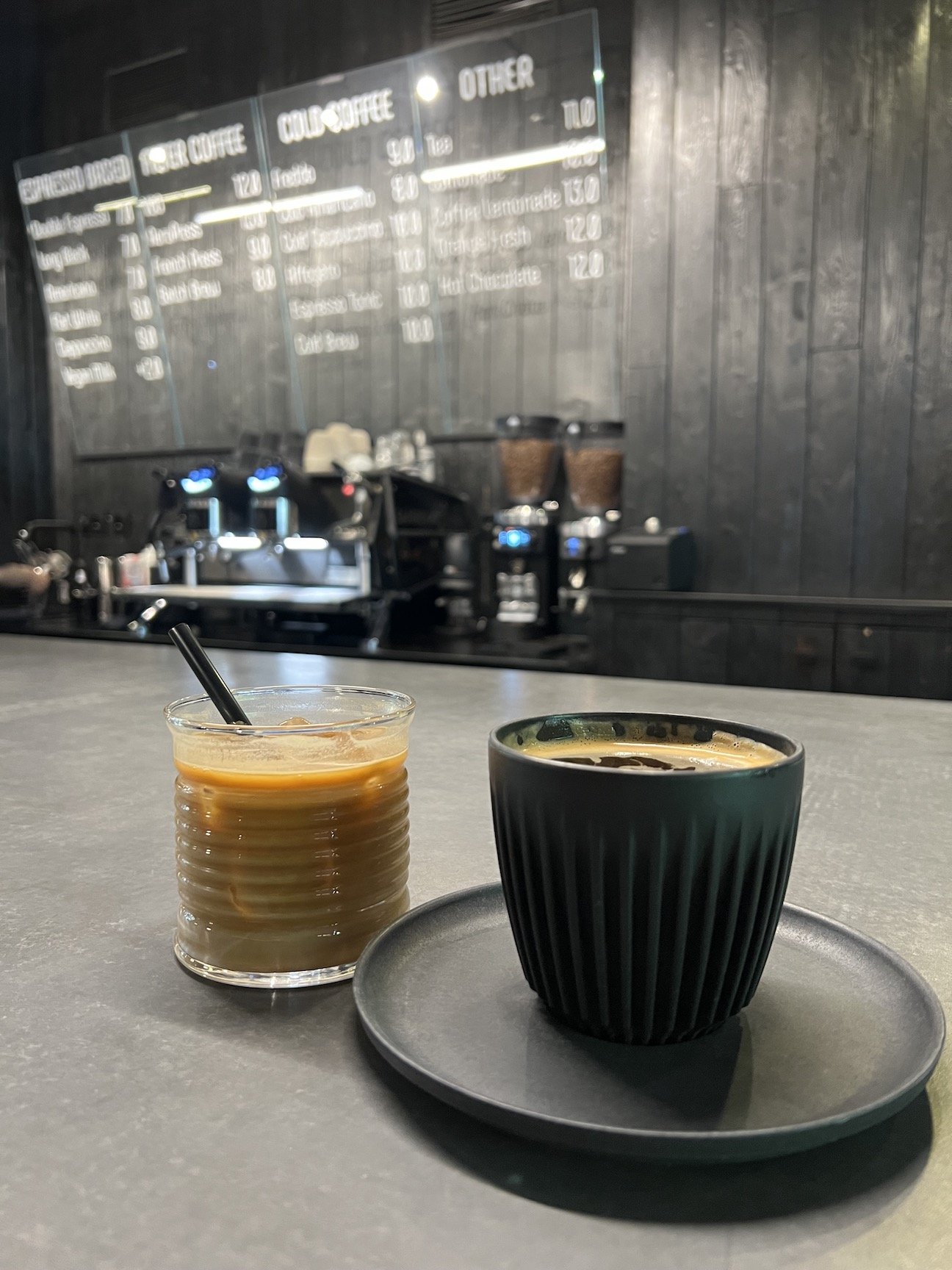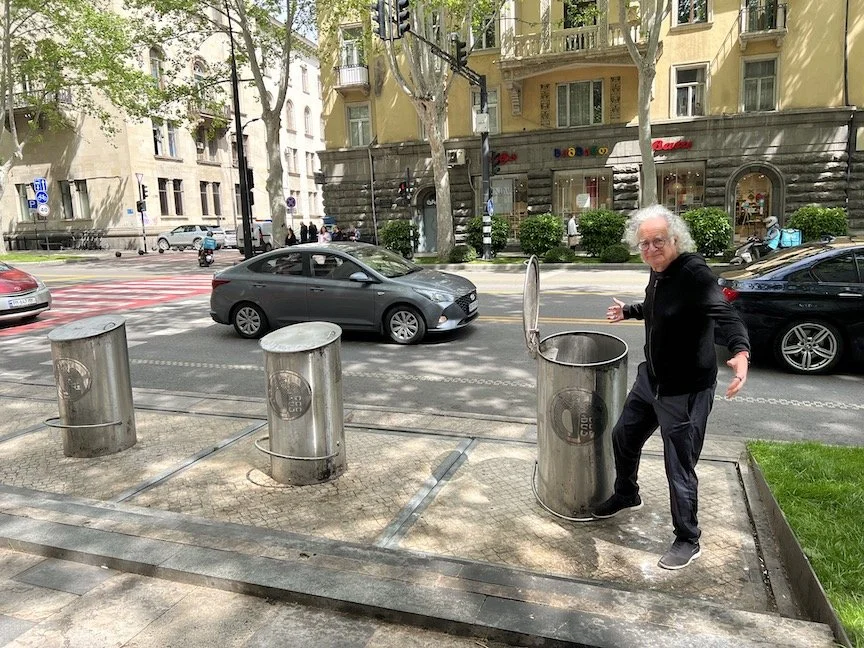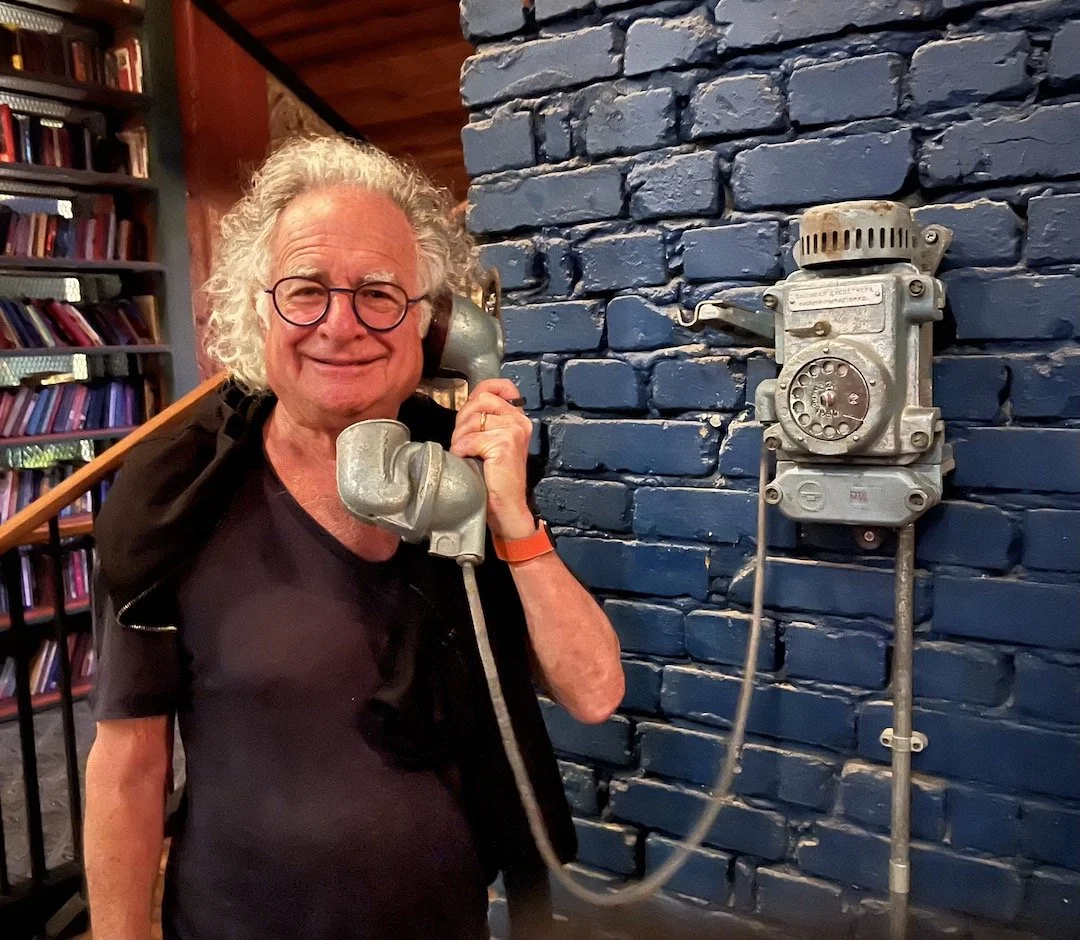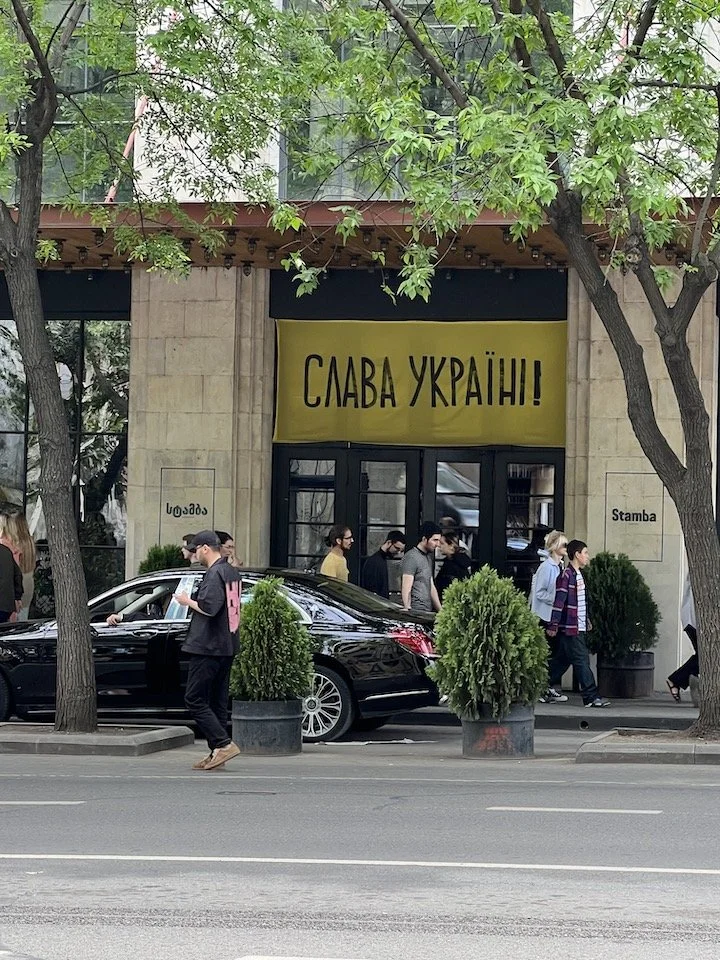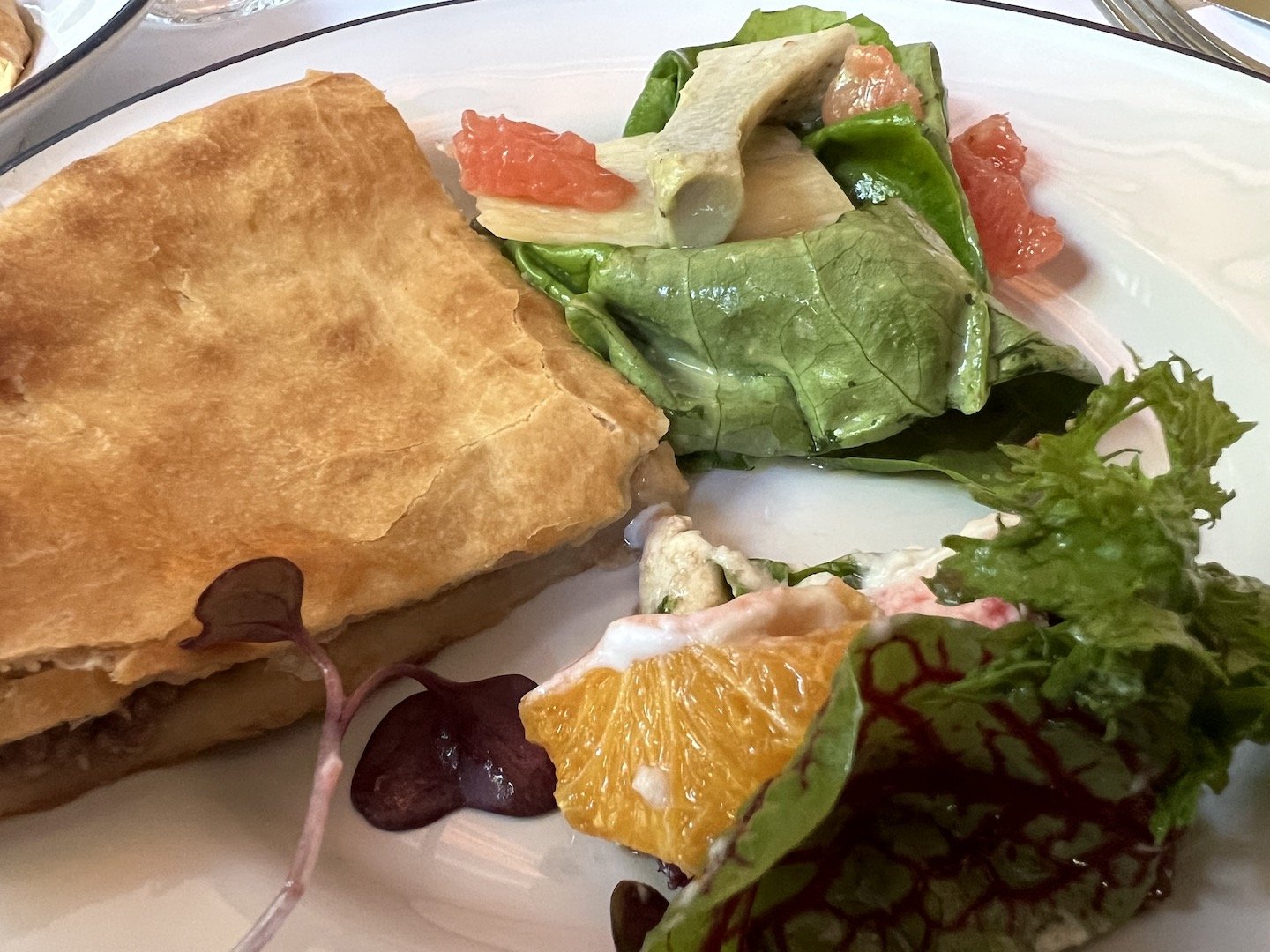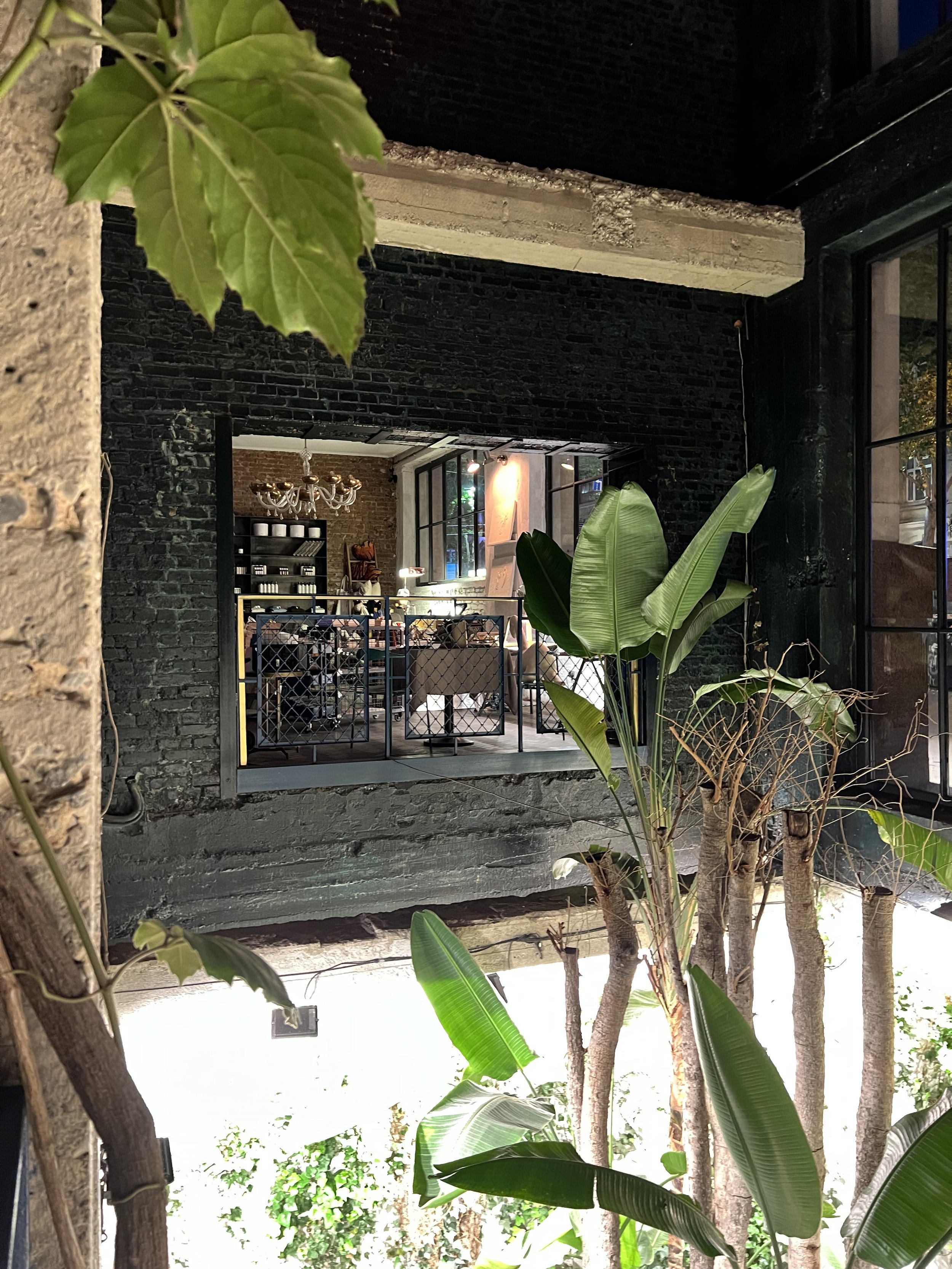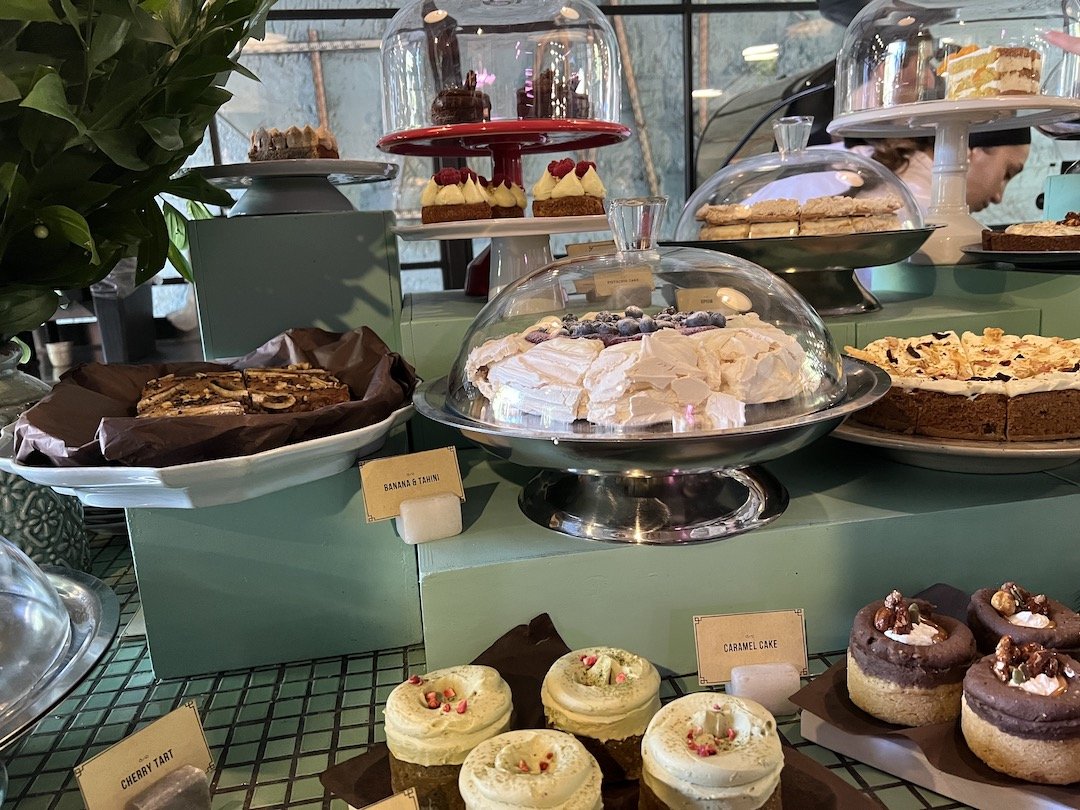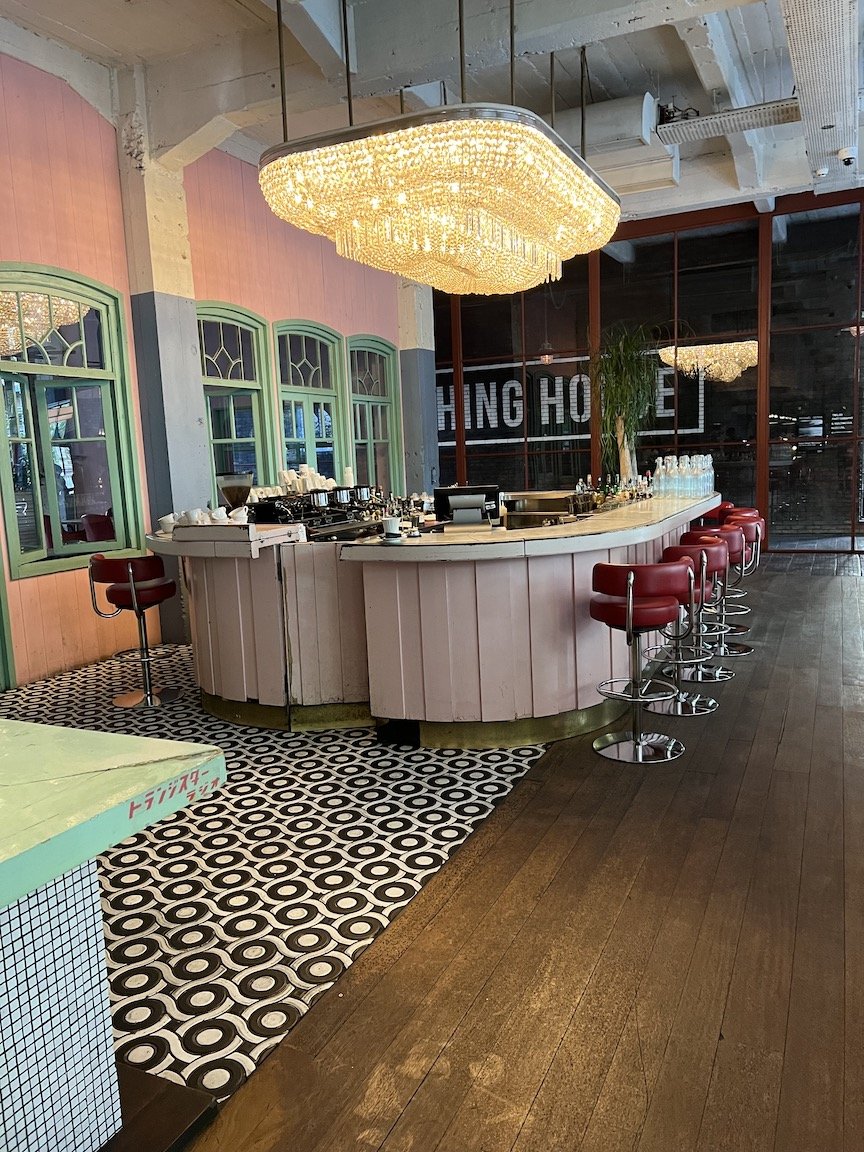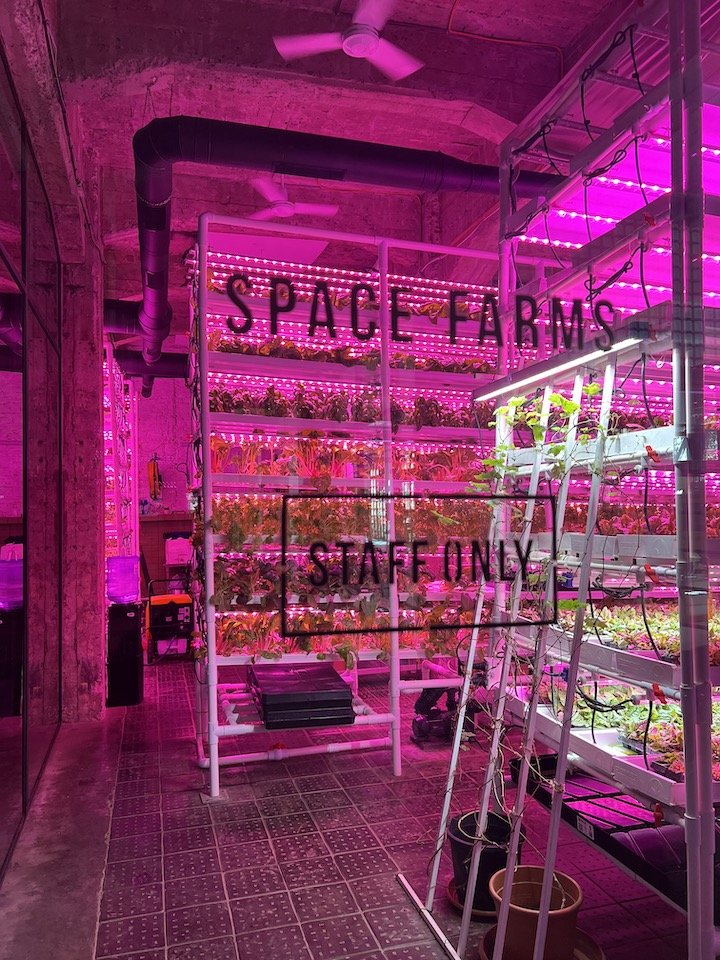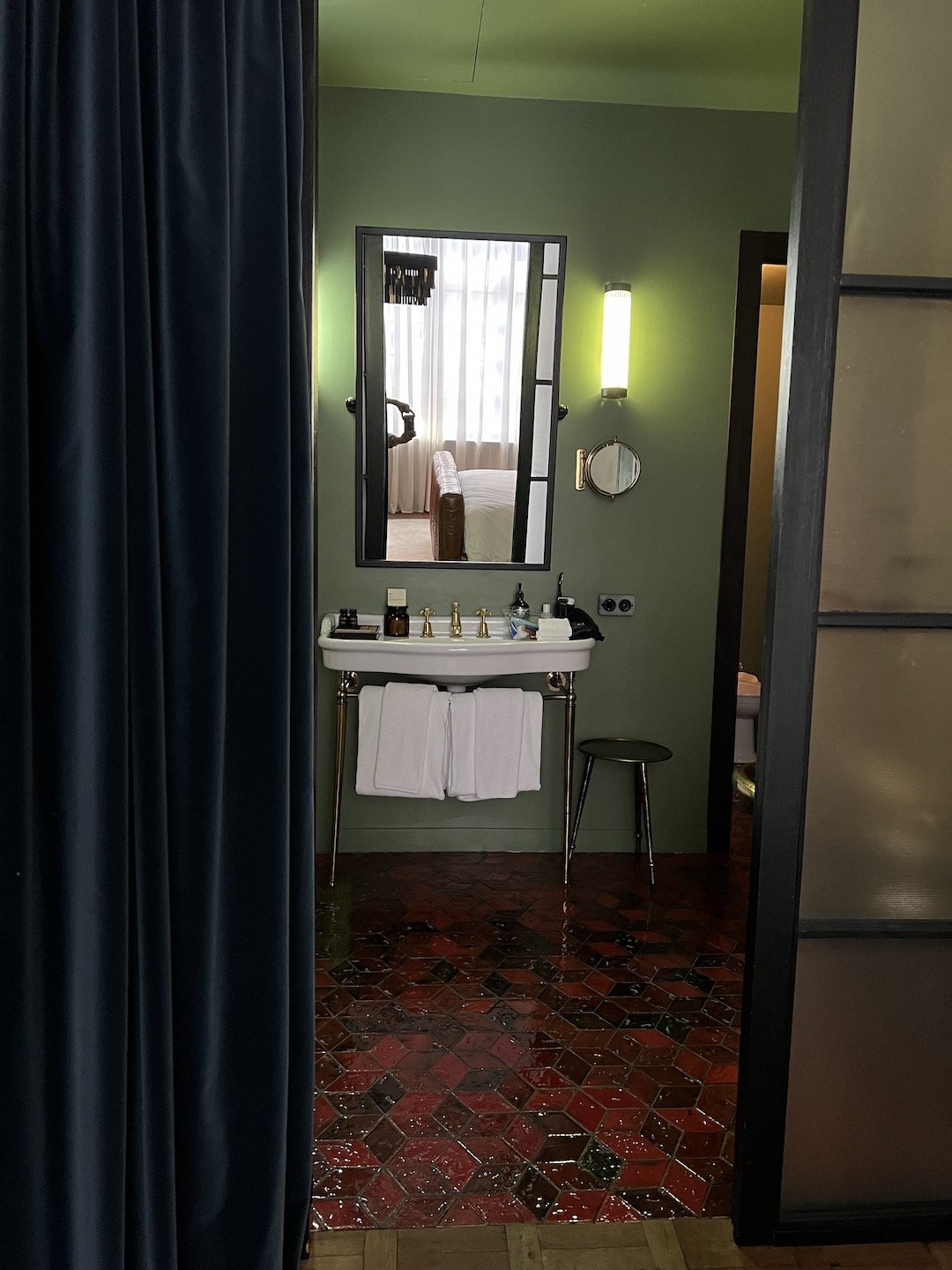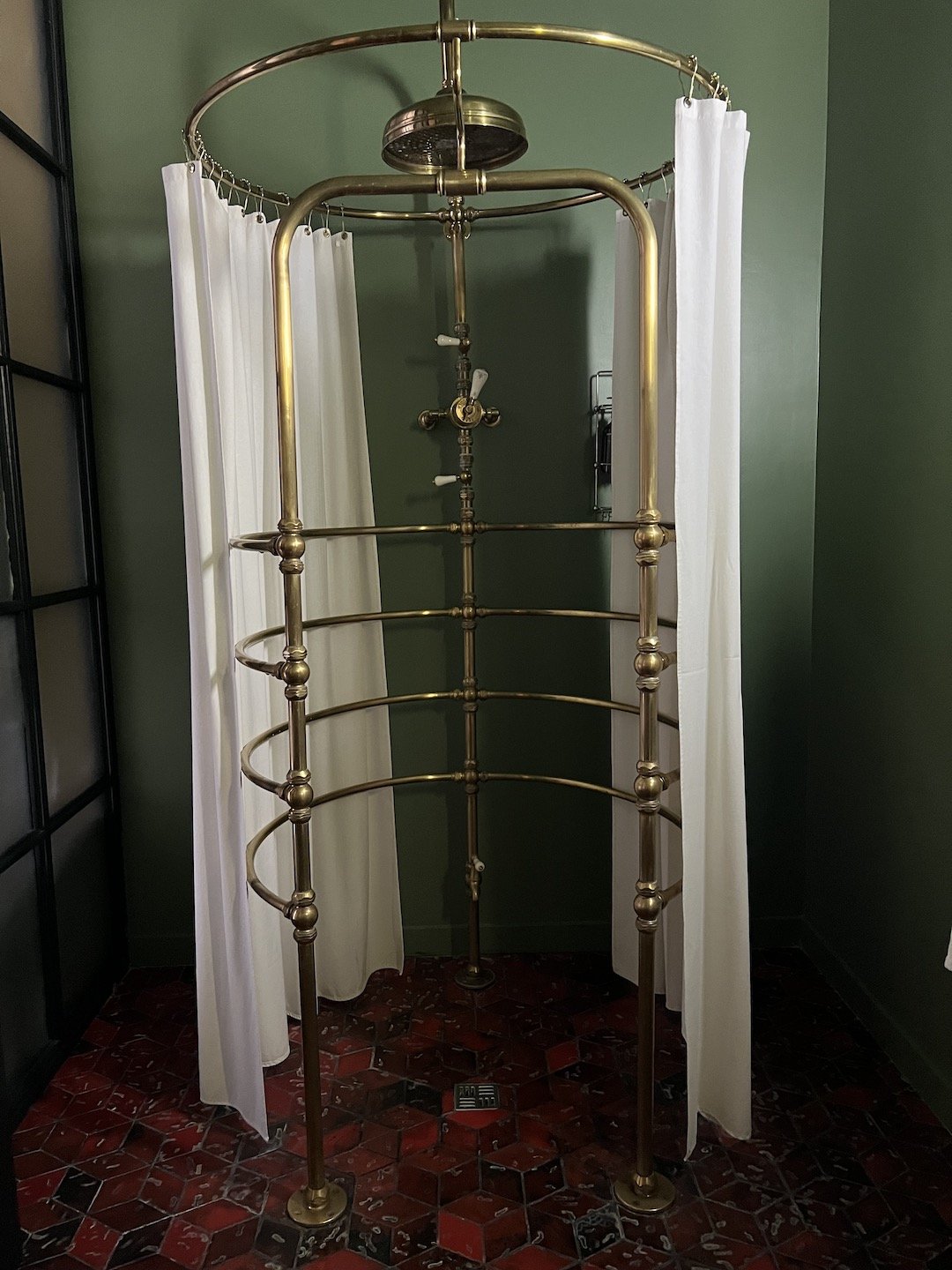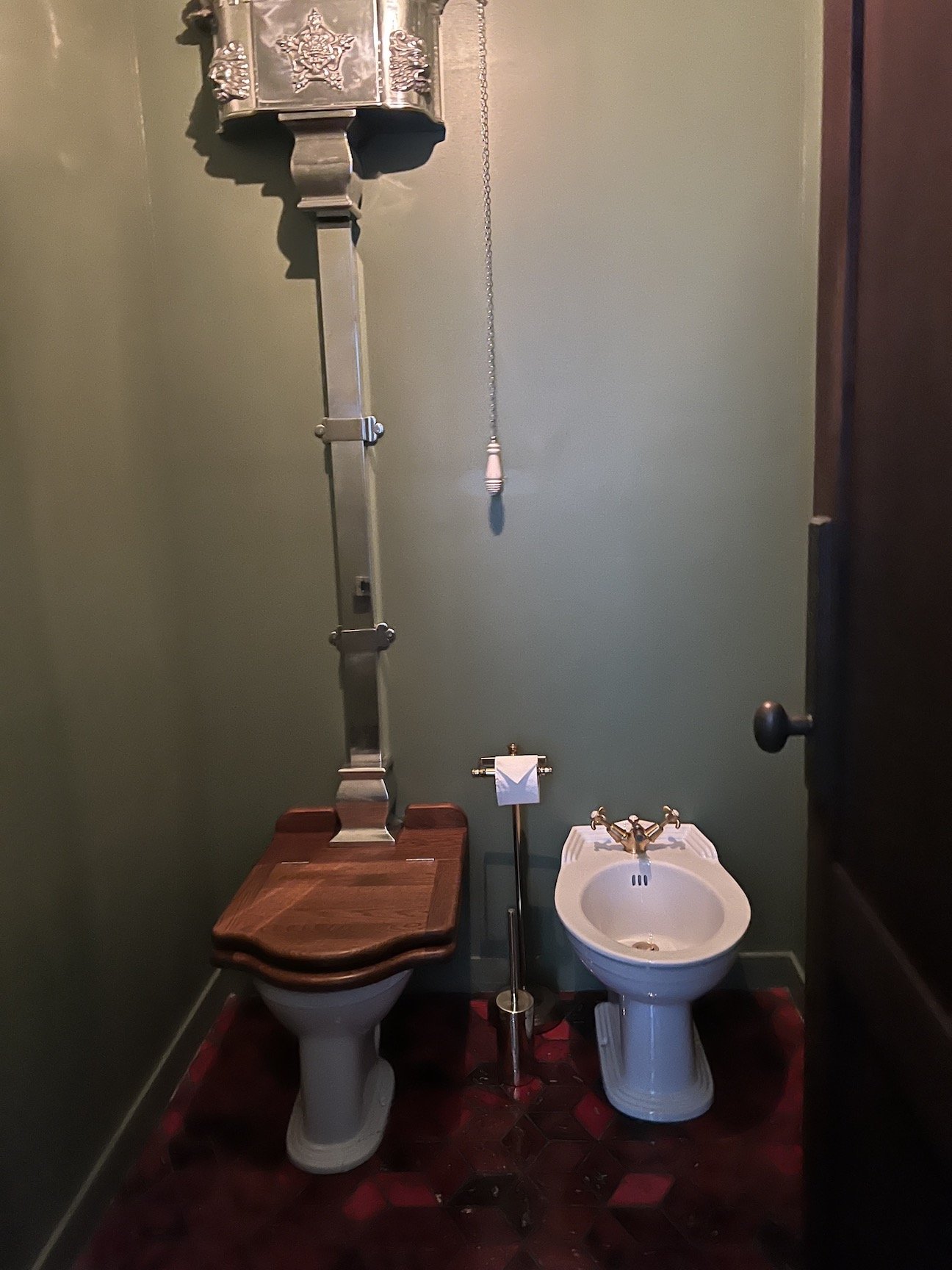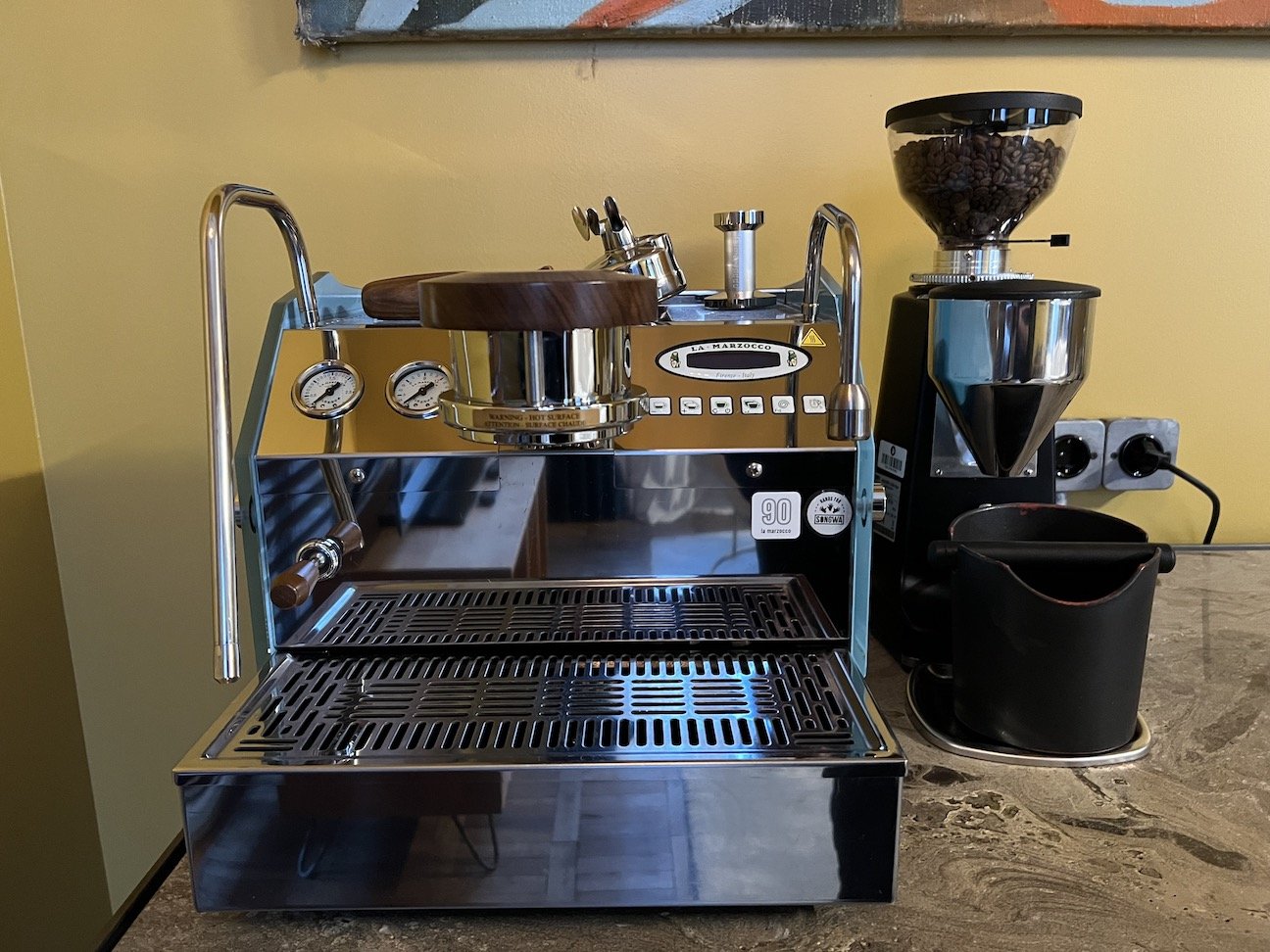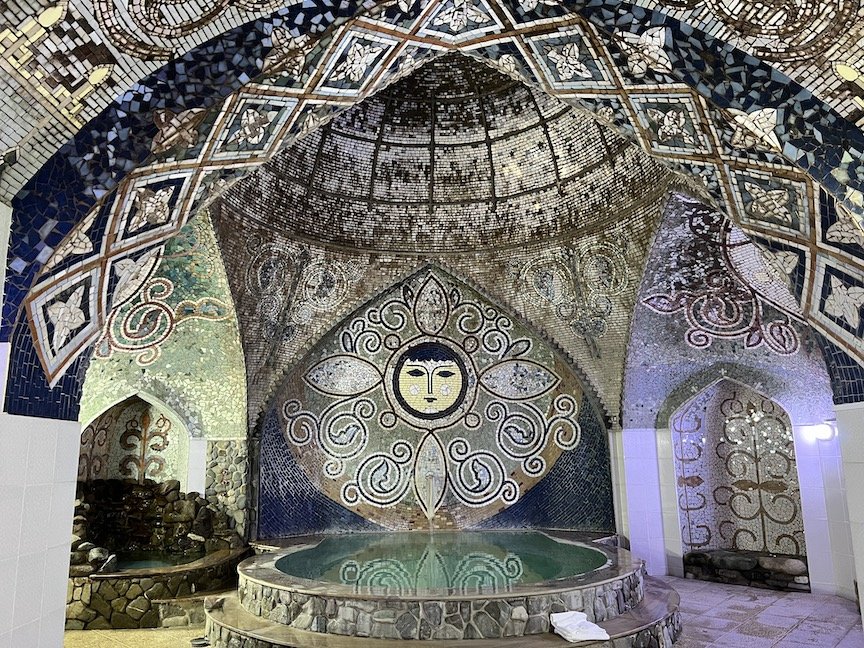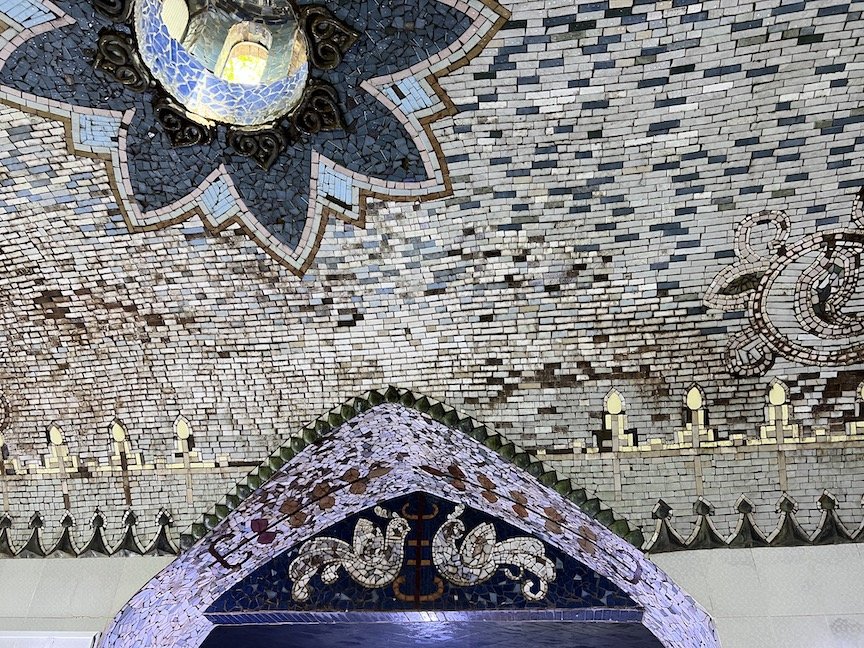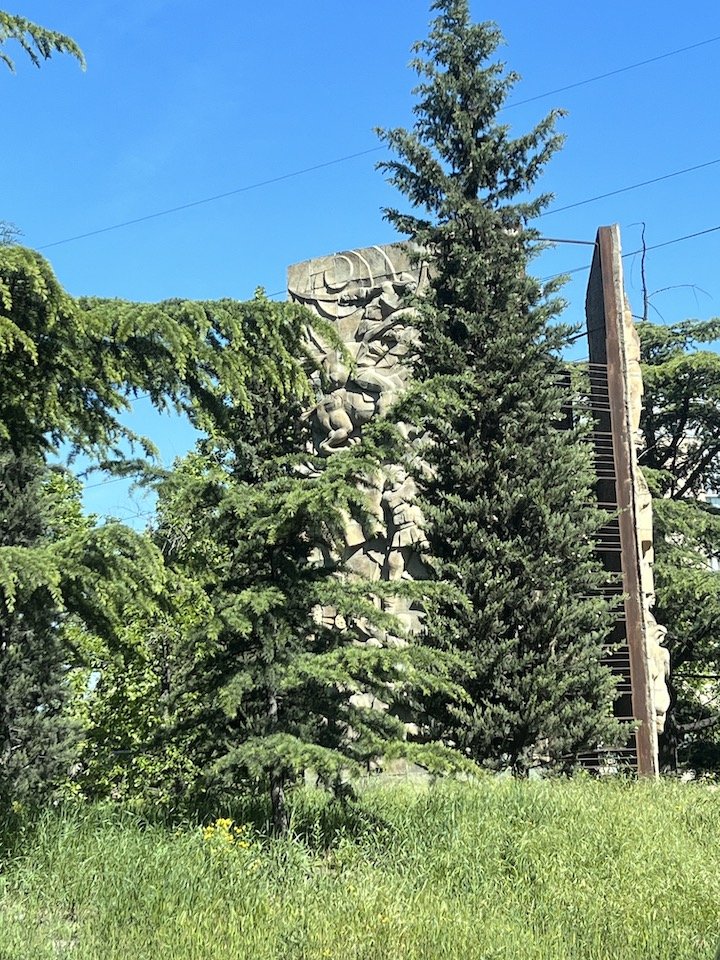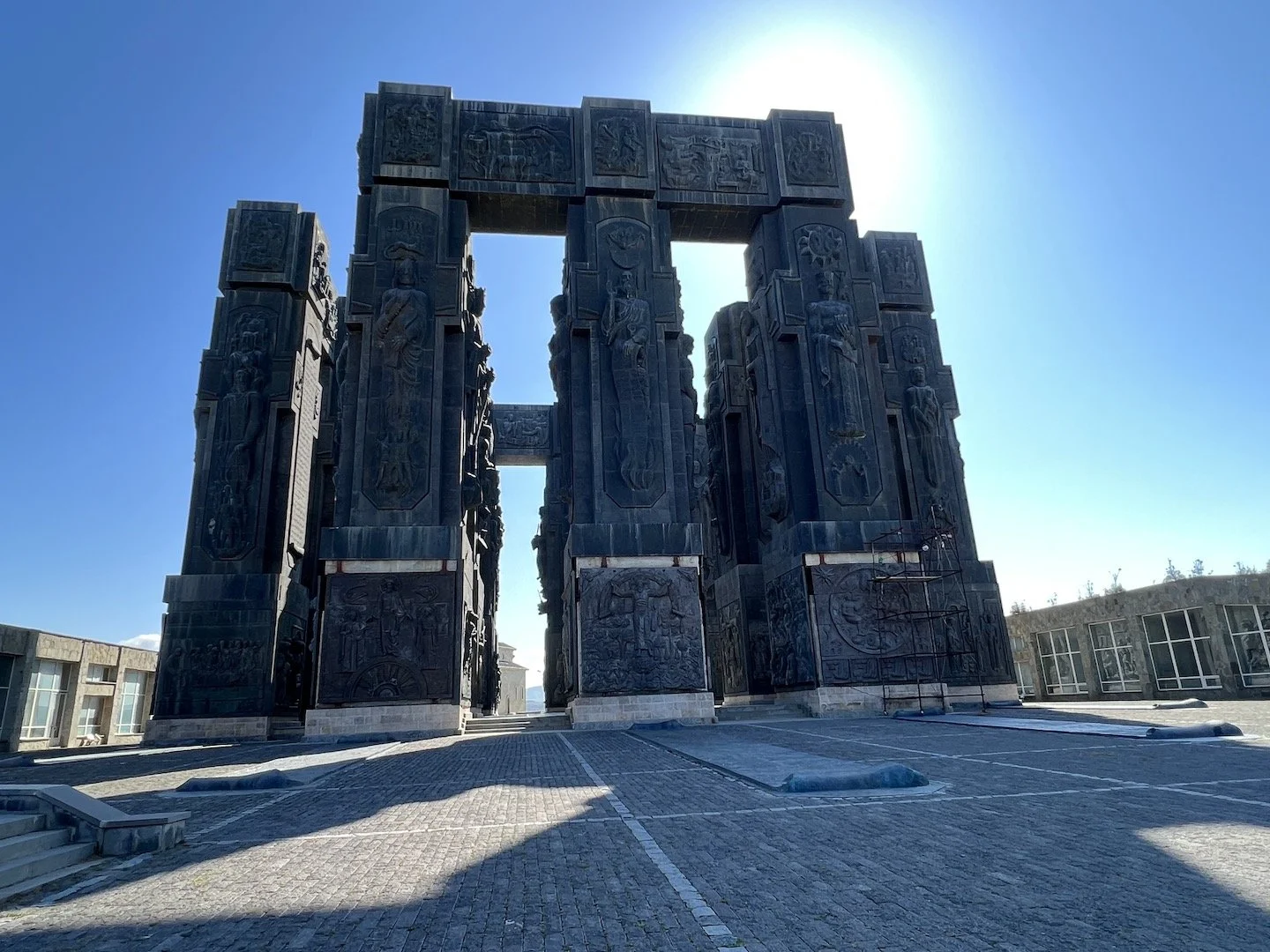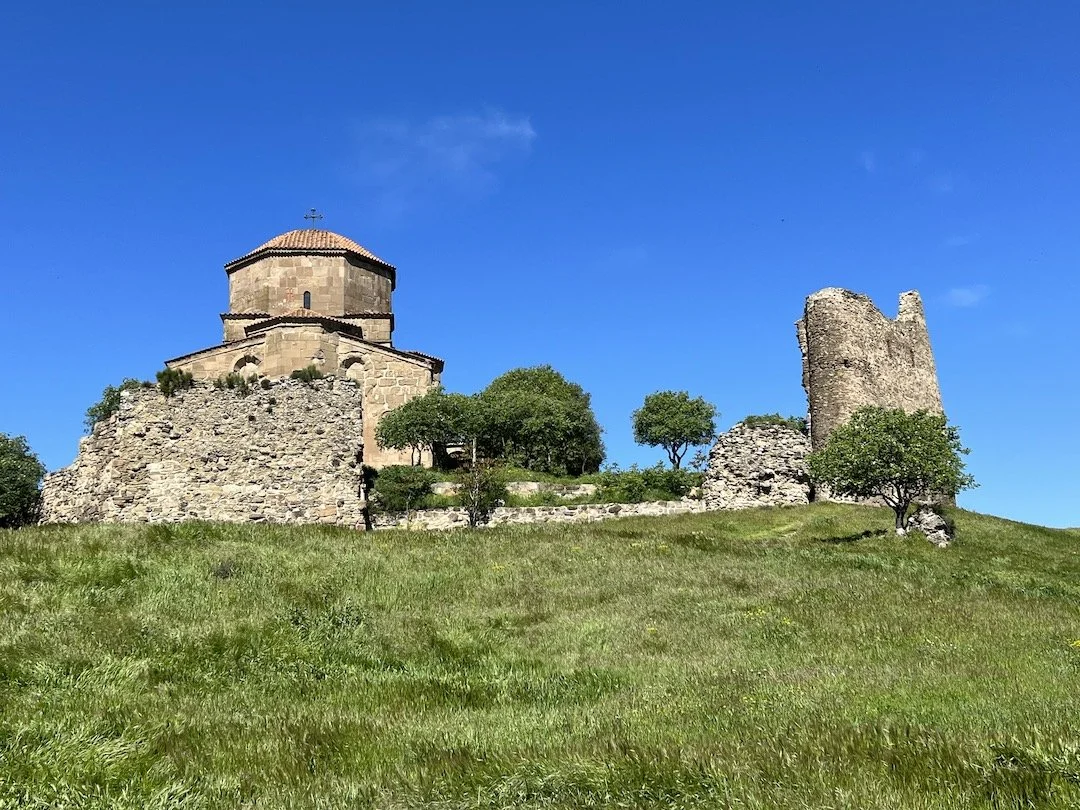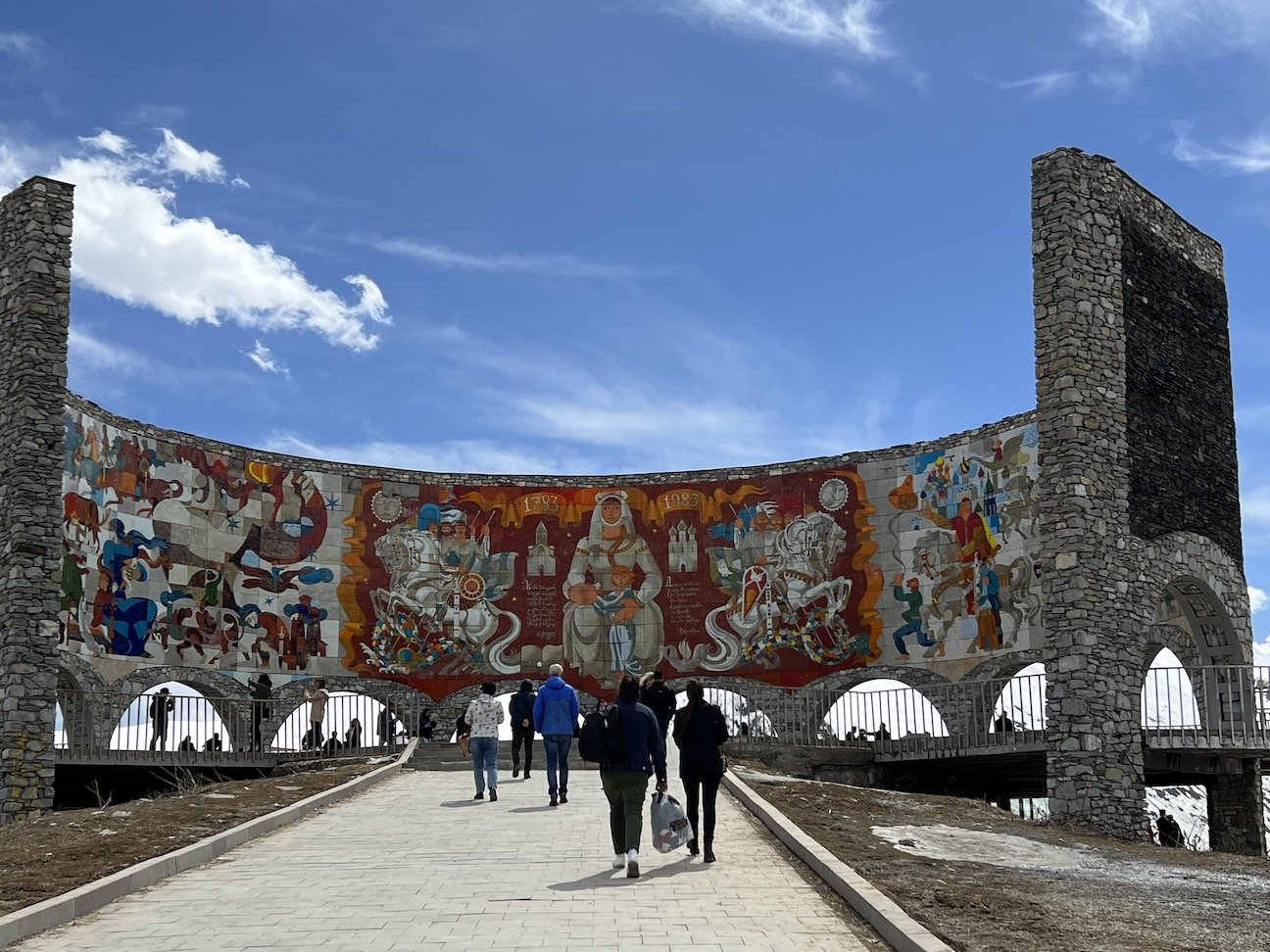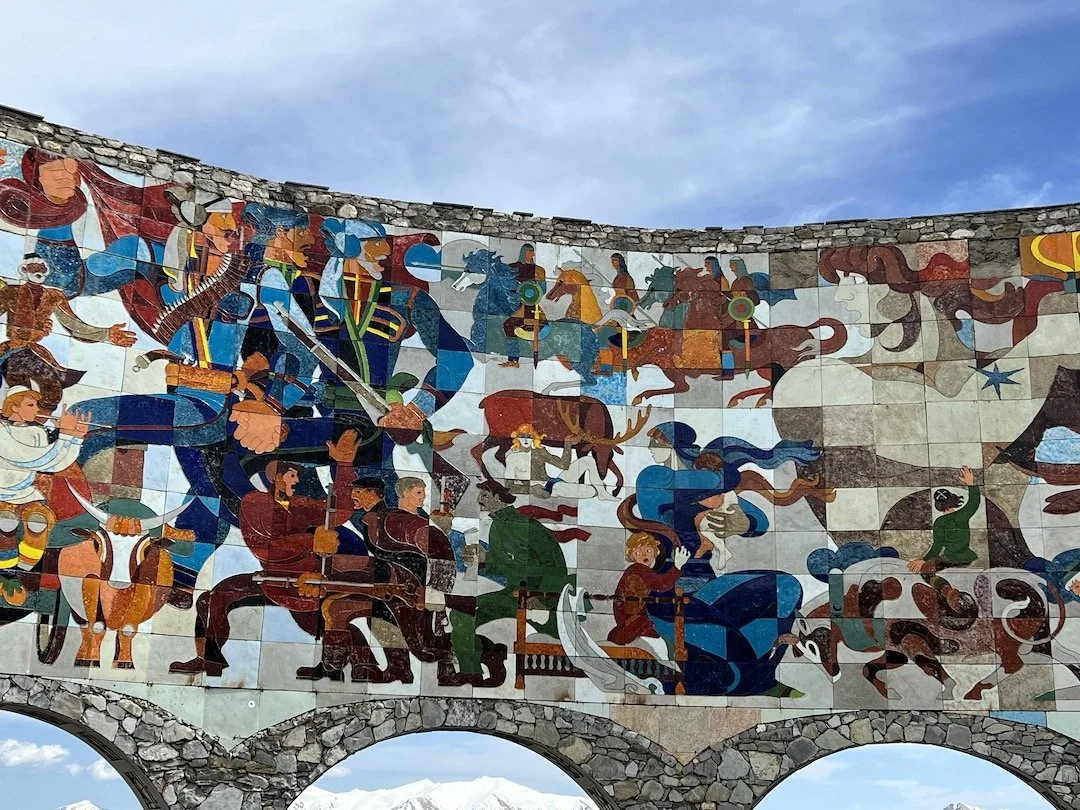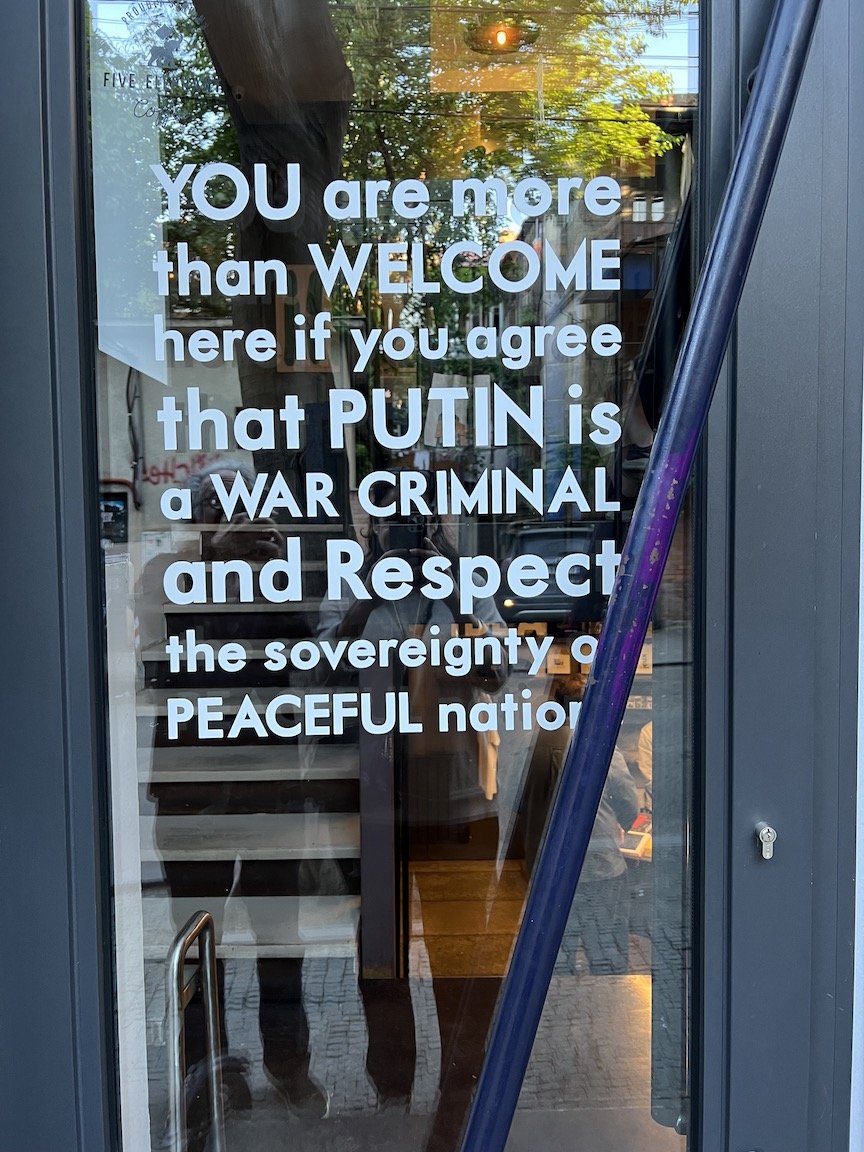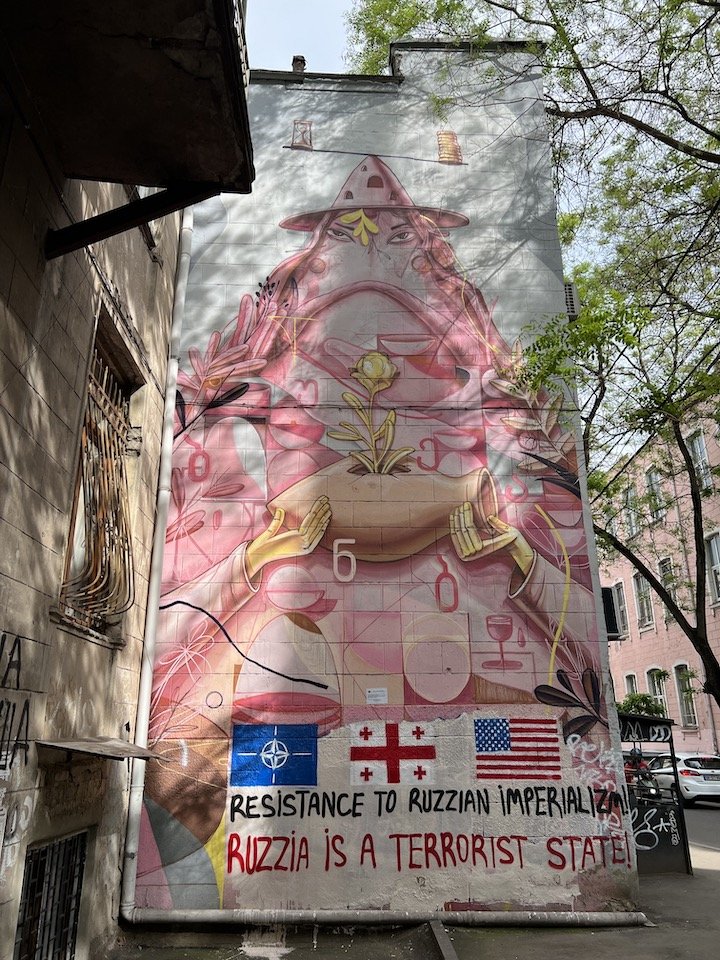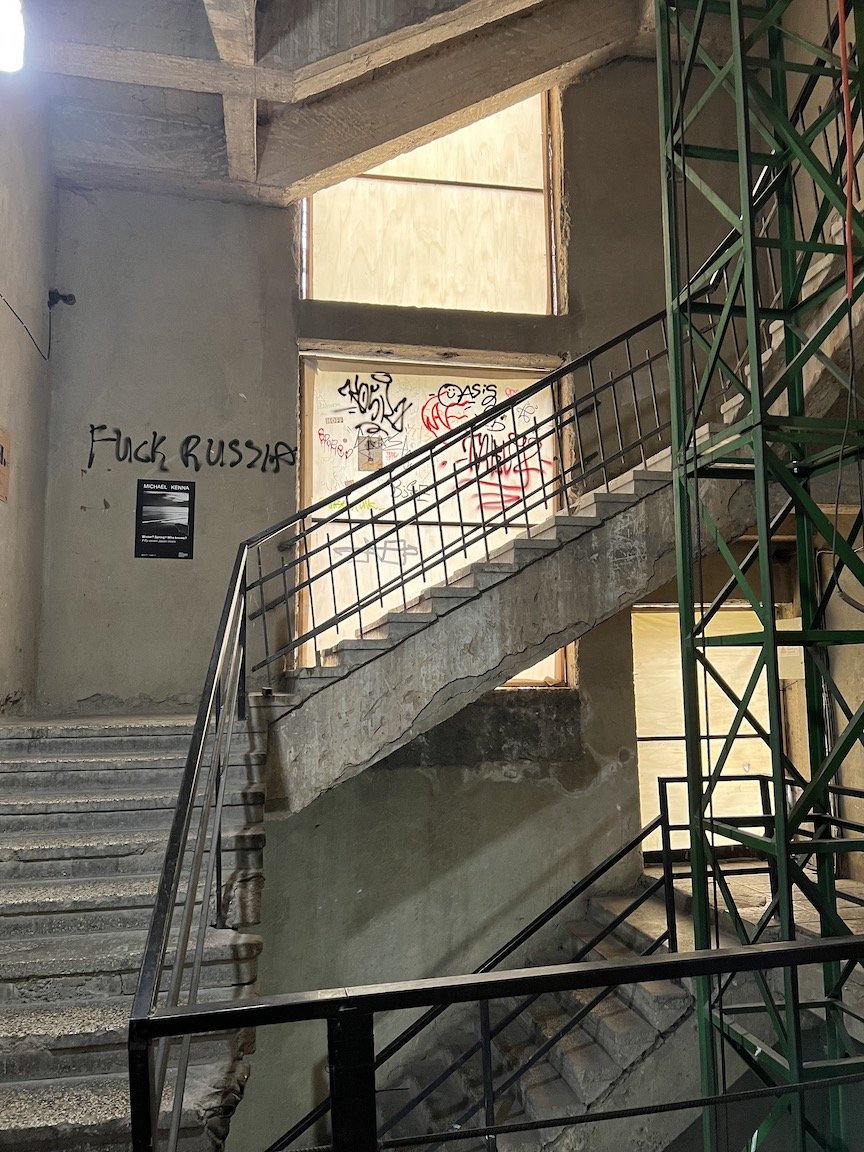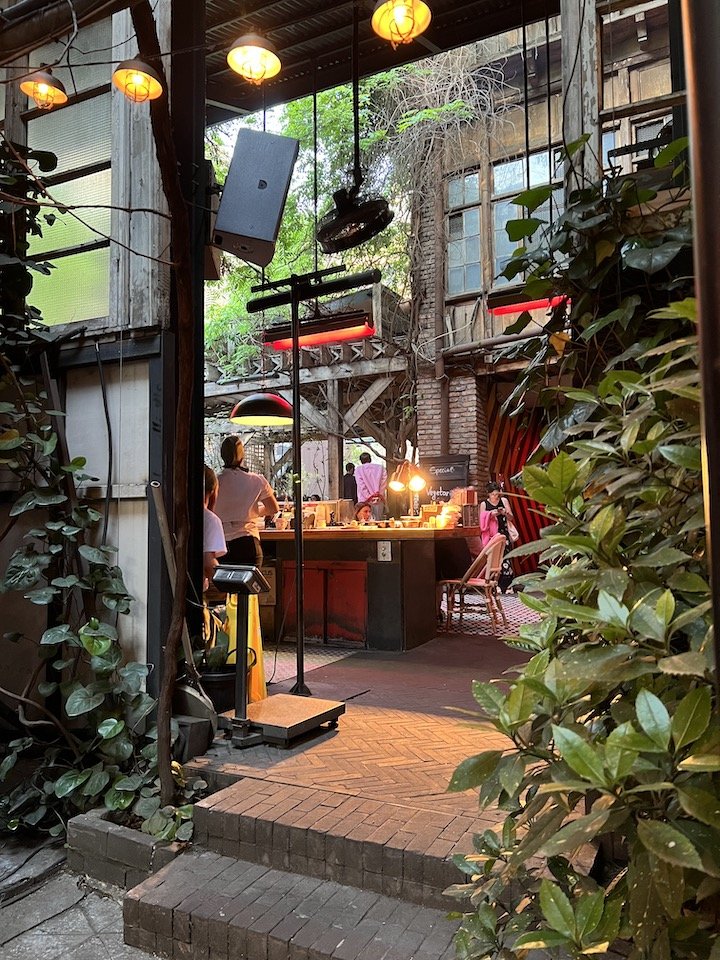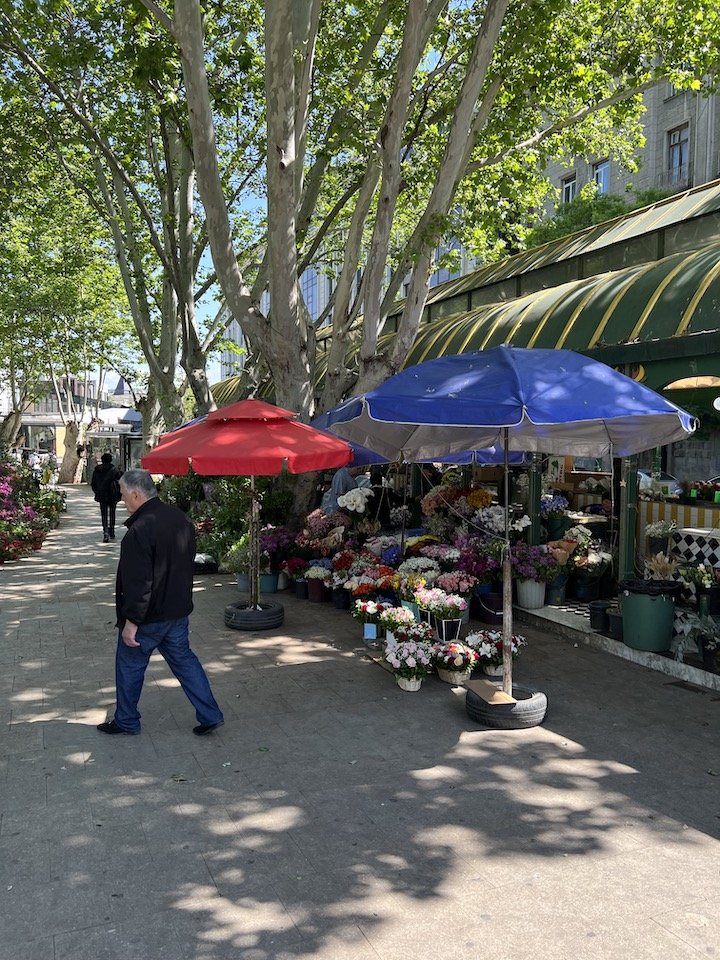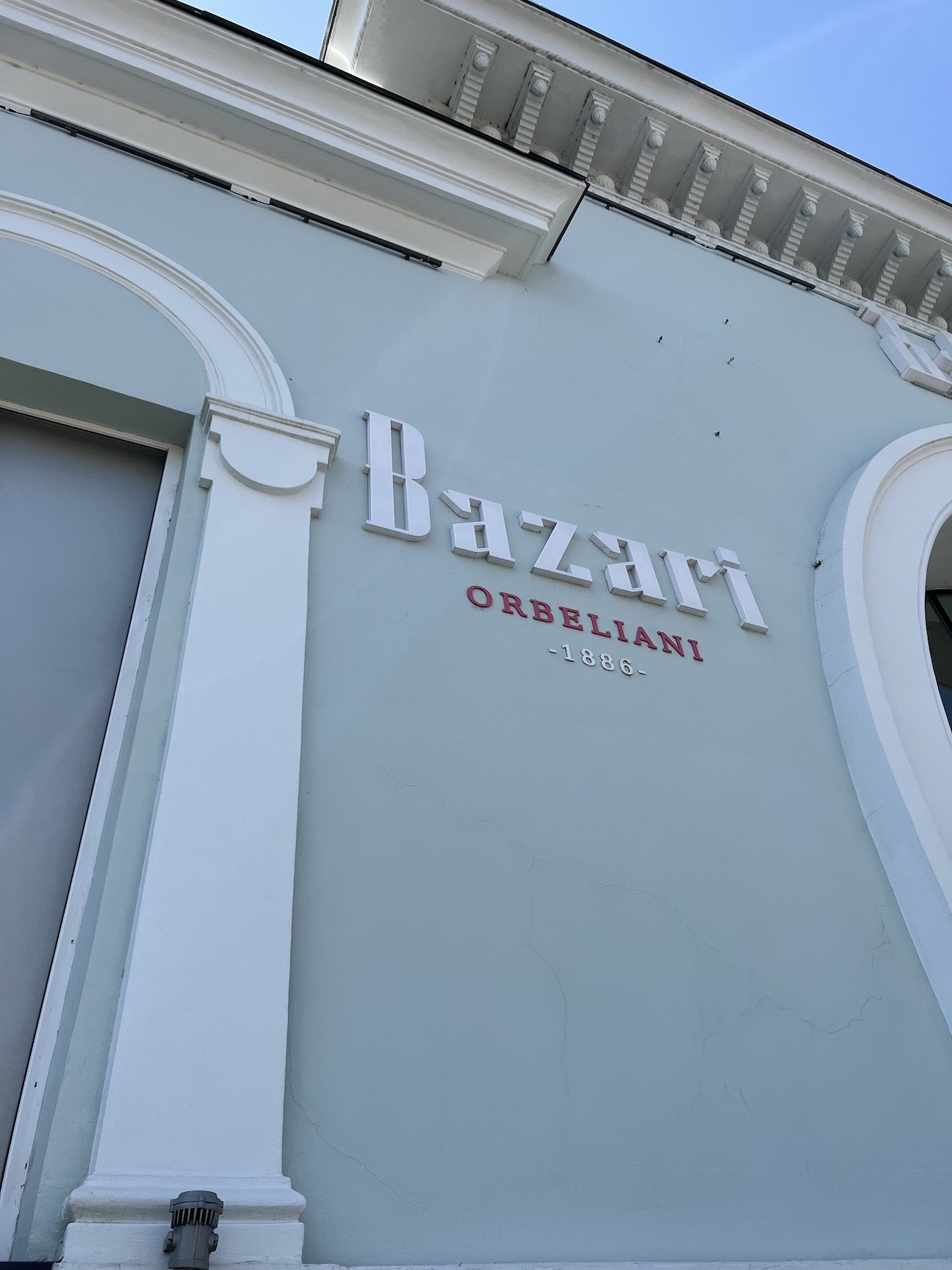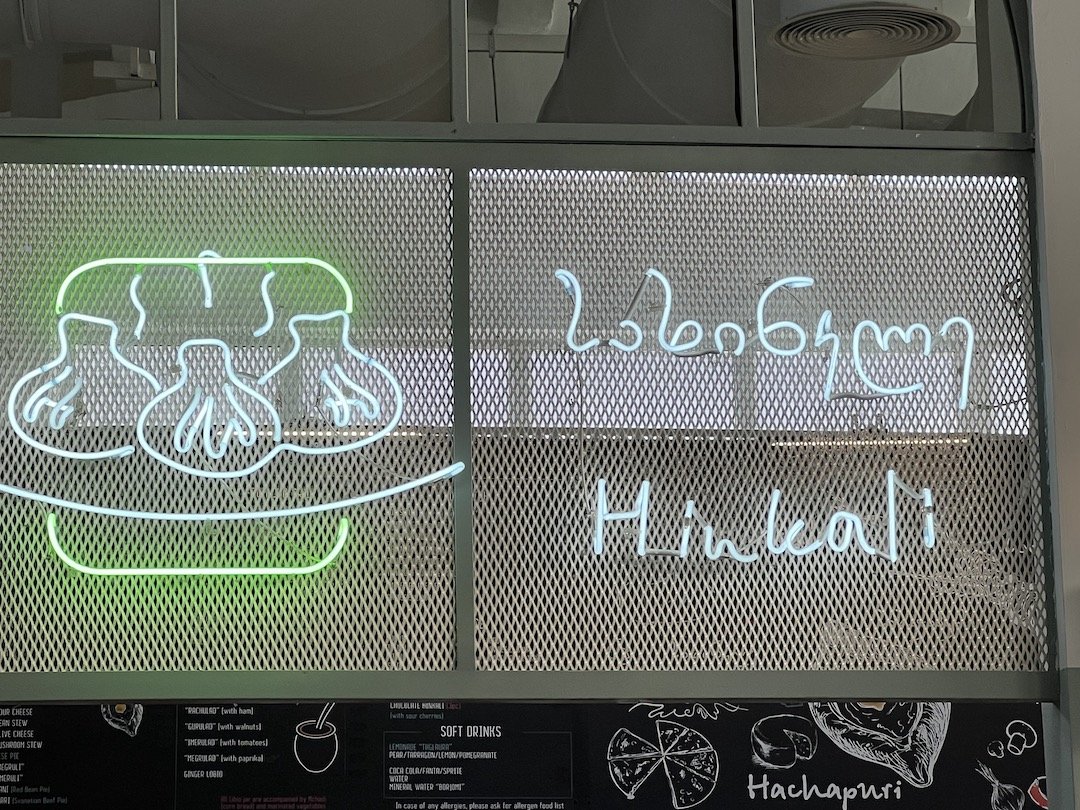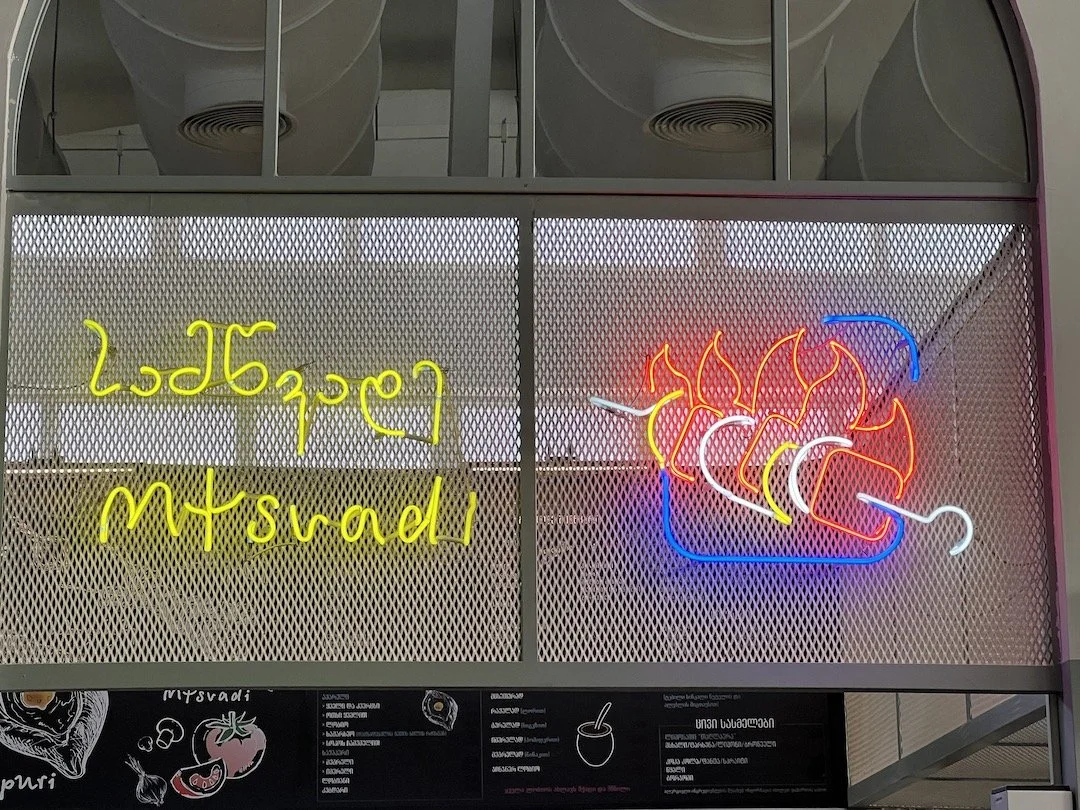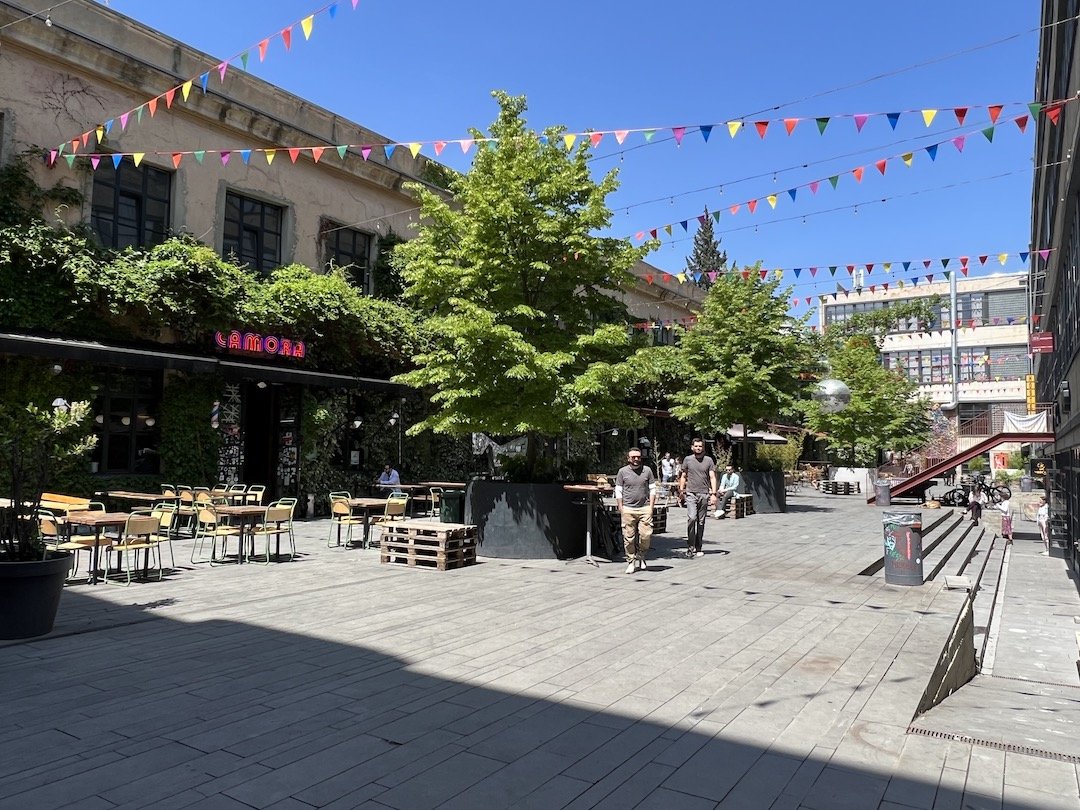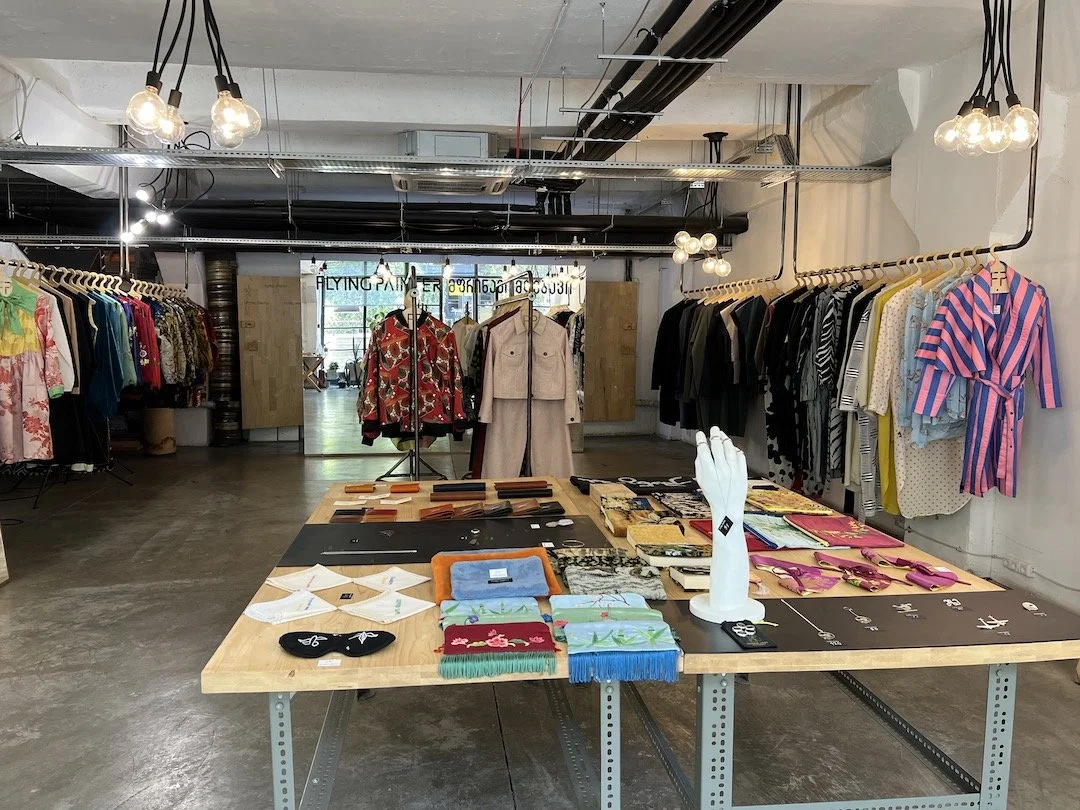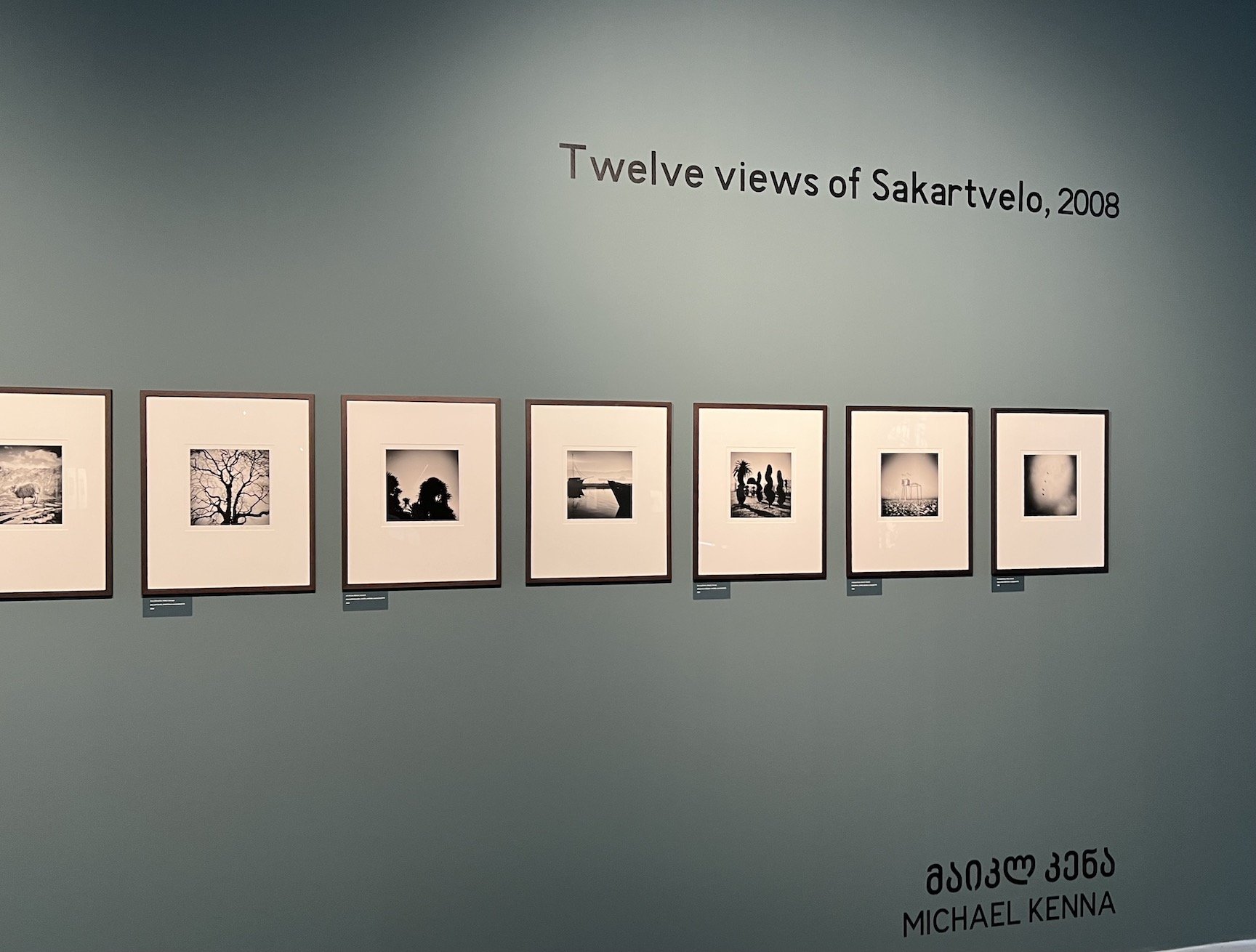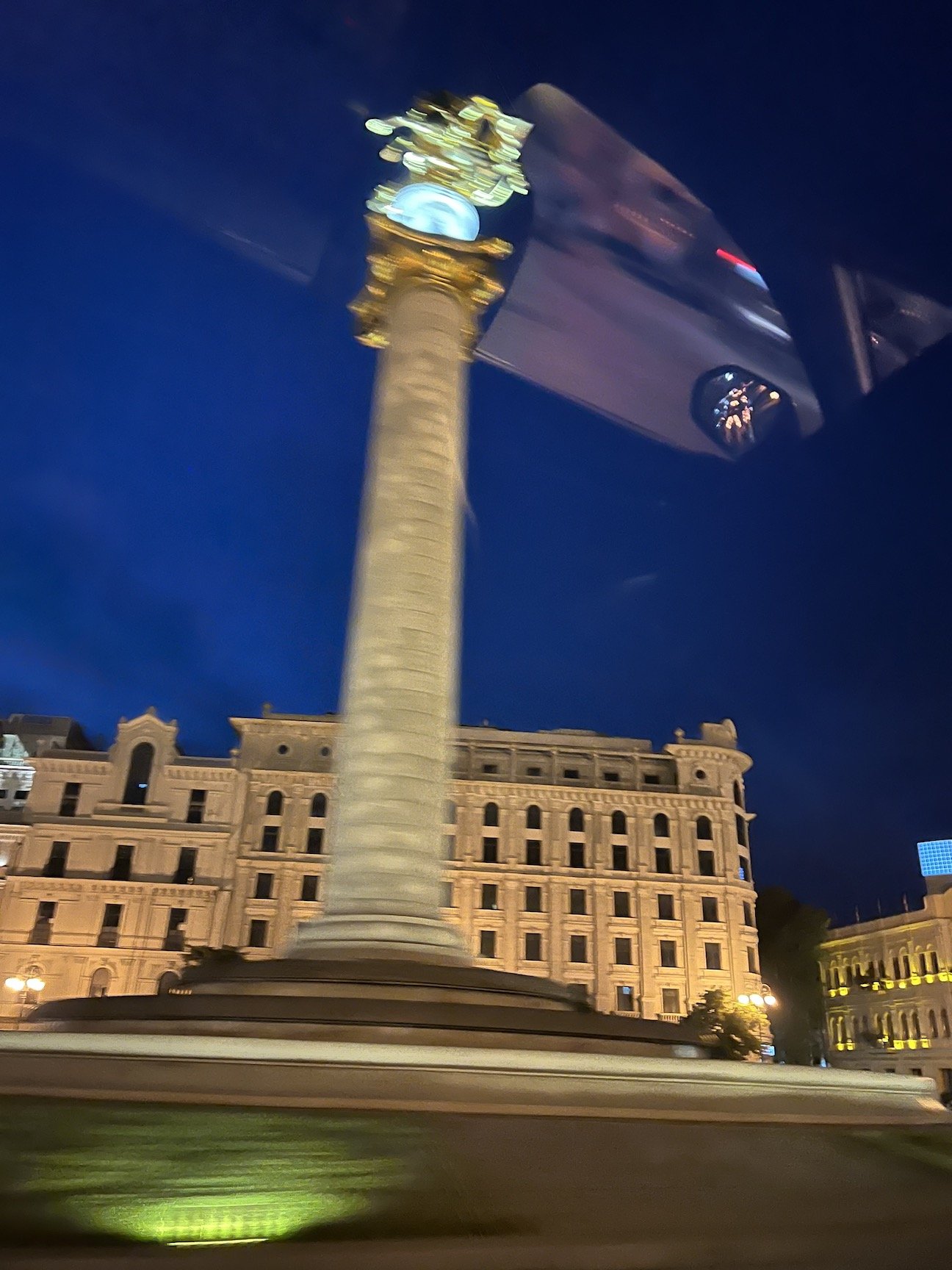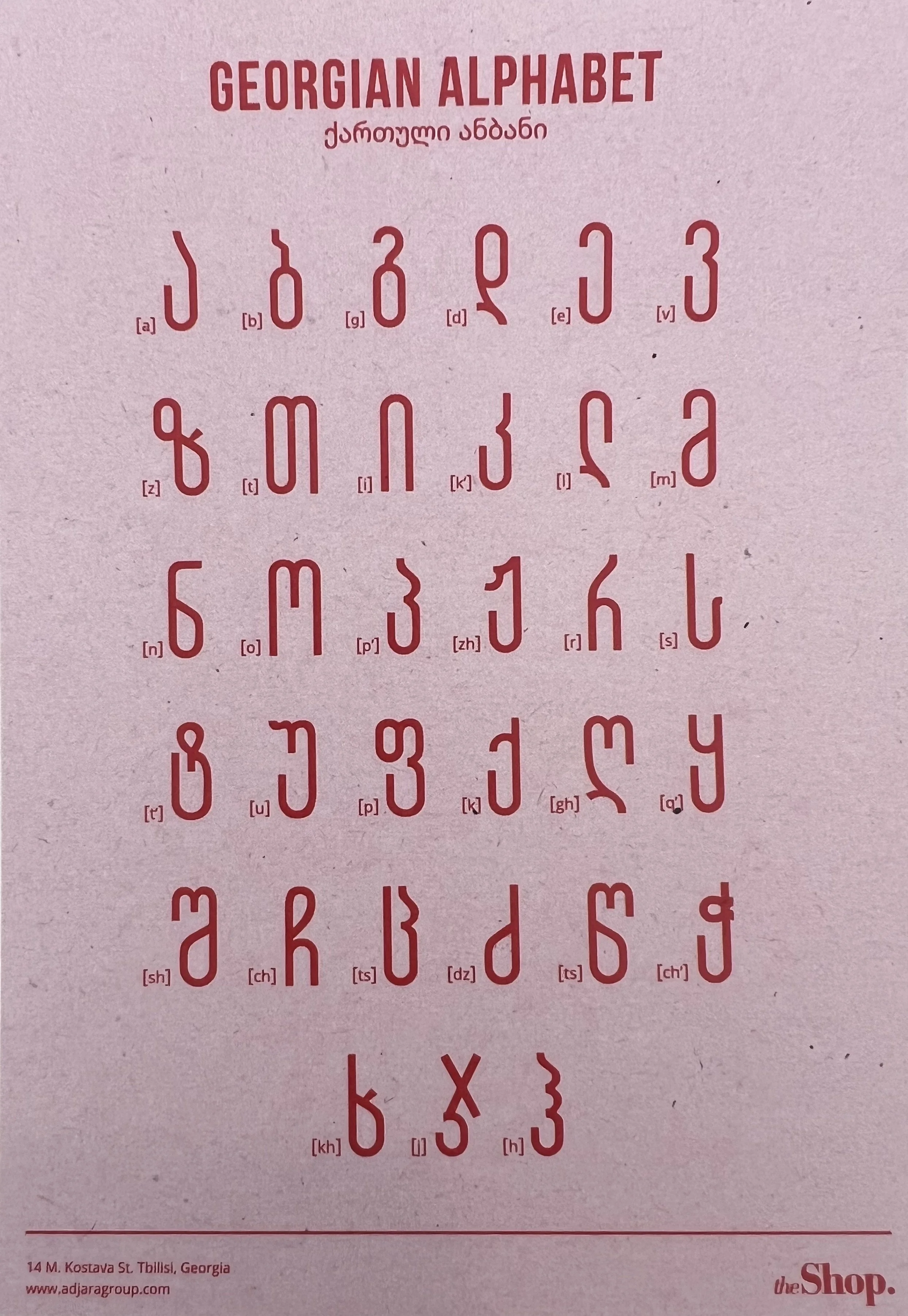A week before our flight to Georgia (the Country not the State) we were in a tizzy when El Al changed our flight from 1:30 in the afternoon to 1:30 in the morning. It’s pretty outrageous that an airline can make changes without considering the inconvenience to their passengers. There’s a domino effect from a 12 hour time change - having to re-schedule hotels, transportation, guides, and restaurant reservations. A quick Kayak search found a perfectly timed Georgian Airways flight one day earlier, so we re-routed and cancelled the El Al tickets.
Spending time in the TLV airport, I’ve seen destinations on the departure board that I have never heard of. They are not the familiar places you would see at LAX. Short trips like Denver, Reno, Seattle, or Tucson become Dubai, Riga, Sofia or Tbilisi. One becomes curious, and thats how we became aware of Georgia and its capital city, Tbilisi. I did some research online and found an amazing blog: www.wander-lush.org. The photography alone convinced me we had to go, and it was loaded with detailed information and recommendations. We were able to have a zoom call with the owner, Emily, and she helped create a custom itinerary for us based on our interests.
Boarding, early take-off, on-time arrival and a punctual pick-up from the hotel made our travel a seamless experience. Bravo Georgian Airways! In many countries the drive from the airport to the city center are usually unremarkable industrial affairs. The roads from Tbilisi Airport were paved, landscaped, and punctuated with monuments and modern buildings. I couldn’t shoot pictures fast enough!
Landscaped monument
Innovative construction
I made a mental note to keep my camera ready for our departure, but at 5am, I’m afraid it would be too dark to capture any of it. Apparently a Georgian planning commissioner was inspired by the Singaporean approach to attracting ‘investment’- to project wealth and prosperity as soon as you leave the airport. So we were greeted by gardens, terraced and caged stone planters and a strange and strategically placed sign - a Bronze portrait dedicated to George W. Bush. Hmmm.
Many Bushes and a plaque
We checked into the first of two hotels in the Vera neighborhood - The Rooms. Together with its sister Hotel Stamba, they occupy a former soviet publishing house, making it a very industrial chic compound.
Stating the obvious
Publishing House Leftovers in the lobby.
Our suite was 3 large rooms - a bedroom, and an office with a living room in the center. Since there was so much space, it was strange that there were no proper closets or drawers, just a pole with hangers and a fabric drape to hide everything. There was one low shelf so I could layout piles of t-shirts and sweaters, underwear, socks and shoes. I spent a little time re-arranging the furniture, moving a mirror to a place where you can actually stand in front of it and carefully tip-toeing a heavy leather armchair to the other side of the room so I wouldn’t trip over it at night on my way to the bathroom.
The office
The Desk
The living room with terrace
The bedroom with poorly placed chair
The reason for the poorly placed chair?
I suspect the heavy leather chair placement was intentional as it covered a huge scrape in the wood floor. There were also two giant bathrooms, one at each end of the ‘apartment’ and a terrace that ran the length of the place. In retrospect a terrace was totally unnecessary because of the rain and the low evening temperatures.
One of two nearly identical bathrooms
We walked up and around the block for a late lunch at Keto + Kote. The streets were lined with blossoming trees and treacherous sidewalks. We passed small red brick buildings and balconies with faded wood lattice. We used Google Maps to guide us to the restaurant with the expectation that once you type in the address, off you go. But Maps landed us on a street with a partition to block cars that dead-ended at a home of a Composer and Actress that was being renovated. To the left was a construction site, and to the right was what looked like a small underpass leading to two private gardens. Confused, we walked back toward the street when a construction worker said ‘Restaurant’? in English and pointed us toward the gardens.
A real hidden gem!
The only nod to the surprise awaiting us were a few small paper lanterns hung on a hedge. We followed the footpath and entered a room with beam ceilings, worn wooden tables and large paintings on the walls.
Georgian Ecclectic
It was a restaurant serving an upscale Georgian lunch of Pkhali (minced vegetables), Ajapsandali (a casserole of eggplant, peppers and onions), and a lamb risotto with champignons. I had a glass of local orange wine made according to tradition and aged in an amphora cask. This was one of the few meals we had with vegetables.
Pkhali
Ajapsandali and lamb risotto with champignons
A local orange wine
Later that night we had dinner at the hotel. The hostess seated us at a candlelit table in The Kitchen. She was wearing a ribbon pinned to her dress but it was so dark I couldn’t tell which cause she was supporting.
The room was large with rustic tables, and an open kitchen at the back that was lit as if it was a film set. The chefs reminded me of Israelis, young, relaxed and sporting a lot of facial hair. Obviously there is not a mandatory hair-net requirement in Tel Aviv or Tbilisi.
This happy kitchen reminded me of Israel.
We ate a light, lovely dinner followed by their signature NY Cheesecake. Our expectations were high, and they were met. It was delicious.
A terrible photo of a wonderful dessert.
Ordering drinks was a hilarious ordeal. While they could make a gin and tonic, they weren’t able to make a vodka tonic. So I tried to order a martini instead and received a glass of something that smelled like vanilla and tasted like vermouth. I tried again by ordering a vodka on the rocks which came without the requisite ice. So I asked for a glass of ice and a glass of tonic so I could mix my own! As the hostess wished us a good night, I could see that her ribbon was blue and yellow, in support of Ukraine.
Both of our tours were booked online, another way that Georgia makes it easy for tourists. We had direct contact with our guides mobile phone which made it easy to re-schedule from 9am to 12pm to avoid the intense rain headed our way. We ate a late breakfast at the hotel, they are known for their sumptuous brunch spread.
The hallway vibe at The Rooms Hotel
The Library/Entrance to The Rooms hotel.
We walked along Rustaveli Avenue which had impressive sidewalks, lined with trees and backed by enormous public buildings: Concert Halls, an Opera House, Modern Museums, National Palaces and some hotels.
I wonder if there is a name for this mix of Brutalist, Orientalist, Art Nouveau-ish structure?
There is the former IMEL building (Marx, Engels-Lenin Institute) a socialist/constructivist building that is now a Biltmore Hotel.
When Biltmore took over, they literally Built More atop the existing Institute - adding a giant blue glass skyscraper to its marble and stone base.
The avenue was also lined with its wild dog population. The dogs have a yellow tag on their ear to indicate that they have been neutered. The dogs of Tbilisi are friendly, happy and well fed. What surprised me is that they are large furry dogs. I guess you need a fur coat to survive a Georgian winter outdoors.
We have a similar wild cat population in TLV, instead of a yellow tag they simple cut the tip of the cats left ear.
I think this building may have had something to do with Electricity.
Our guide today, Yonas, requested that we meet him in front of the Burberry store in Liberty Square/Freedom Square, which is actually a giant roundabout. In the center is a gold-gilt statue of St.George on a horse balanced on a 40 meter tall column. Because of the placement of the statue and the name St. George it is assumed that the country is named after him. Georgia was originally known as ‘Sakartvelo,’ and later ‘Gorgan,’ Persian for the ‘Land of wolves.’
St. George
Nearby we noticed two newer buildings designed to look old, and in-between them was a large metal piece that looked like a tangle of rollercoaster scaffolding. I asked Yonas what it was and he explained that sometimes investors start a building and can’t afford to finish it, so they leave it, and it becomes ‘Art.’
‘Art’
As they were digging in the area they happened upon the old wall that surrounded the original city. You can see the original 12th century stones beneath the newer 16th century brick. As we walked the architecture of the city changed from European to Oriental, from Soviet to Modern. There was a large, blue two story colonial building above the old city wall that had collapsing white balconies surrounding it. Yonas told us that balconies were the original way of communicating - priests, and politicians speak down from them and families and neighbors shout up to them.
A model of Communication
Rezo Gabriadze Marionette theater has both the largest and smallest public clock on its leaning tower.
The Largest Clock is above us and the smallest over A.s left shoulder.
Eighty-four percent of the Georgians are Georgian Orthodox. We stopped at Anchiskhati Basilica, the oldest orthodox church to survive in Georgia. Women need to cover their heads in places of worship, and luckily I was wearing a hoodie under my puffer. Inside is the Ancha Icon of the savior (the meaning of Anchiskhati) brought to Tbilisi in the 15th century. The icon has the face of Jesus Christ surrounded by gold, embossed with symbolism and studded with gems. People pray to the Icon and if their wishes were granted or problems solved, they returned with a valuable piece of jewelry to be placed around the ‘neck’ of JC. It really was magical to see the various strands of pearls, gold chains, charms, bracelets and rings layered upon each other, around his neck.
The original Harry Styles? The Icon borrowed from Wikipedia and without his pearls!
We also learned about the Grapevine cross or Saint Ninos Cross - a symbol of the Georgian orthodox church. The legend is that a woman from Cappadocia, Turkey created it (or, less likely, received it from the Virgin Mary), and set forth to preach in Georgia. It is made from two grapevines bound together with the hair of Saint Nino, which created a cross with a drooping horizontal line. The original cross was kept in Mtskheta, but was taken by the Persians to Armenia for almost 600 years, and recovered 200 years later.
St. Ninos cross borrowed from the internet
The rain became stronger as we continued our tour toward the bridge. Yonas explained that just 20 years ago Tbilisi was considered a “swamp of corruption” with a “gangster community.” Now the Government works toward more transparency, even incorporating the concept into its architecture. We stood on the transparent, but covered Metekhi Bridge, or the “Bridge of Peace” and talked War - Georgias war with Russia in 2008. The people of Tbilisi are very anti-Russian. Many of the people working at our hotel wear ribbons in the colors of the Ukranian flag as a symbol of solidarity. If a guest of the hotel speaks to the staff in Russian, the staff responds in English, even though many of them know and understand Russian. Apparently George W. Bush was an advocate for Georgia during this war. American planes were parked at Tbilisi airport and Russia/Putin requested that they be removed so that Russia could bomb the airport. Believing that would give Russia the green light, GWB refused. This explains his bronze banner on the George Bush Street.
The Bridge takes you over the Mtkvari river and into Rike Park. Inside the park is a striking modern glass building that looks like a pair of metal tubes. It was meant to be a musical theater, or an exhibition hall, even a wine museum. Yonas is a wine lover so he likes to think that the shapes were inspired by wine bottles or maybe the amphoras that the wine was aged in. Much like the metal structure near Freedom Square, they are empty, abandoned and are now considered ‘Art.’
The Bridge (center), Amphora ‘Art’ (on the right) and the Mushroom building (upper left).
The rain continued as we hopped on the aerial tram to the top of the mountain. From above we could see the city, its jewish synagogue, a mosque and the famous ‘mushroom building.’ The architecture of the Public Service Hall resembles a cluster of terraced mushroom caps positioned next to the river. It’s a municipal office for passports, visas, marriages and more. It rivals Vegas for a 15 minute marriage, and also grants a 15 minute divorce - as long as decision is mutual.
We had great overview of the city from the tram, but shot through the rain-dropped windows doesn’t make a pretty picture. Moody yes, pretty no. Old Tram turned cafe near the Aerial tram.
The symbol of Georgian character - the ‘Mother of Kartli’ stands atop of Sololaki Hill. She is 20 meters tall and made of aluminum. She has a wine glass in one hand to welcome friends and a sword in the other, to warn her enemies.
After visiting the Mother, and because of the now downpour, our interest in seeing the Narikala Fortress was minimal. We skipped the no-rail, muddy uphill hike inside the fortress. My tread-less shoes slide on the cobblestone as we descended a literal mountain worth of steps to reach the city below. I held the railing with my soaked left hand and the umbrella with my right to try to salvage my blow-dry for the remainder of the trip. We passed the only waterfall in the heart of a major city, two small bridges covered in love locks, and continued into Abanotubani, the sulpher bath area. In retrospect, we should have kept the tour at 9am because we would have missed the rain entirely.
Love Locks and the beautifully tiled exterior of a sulpher bathhouse.
At the end of our tour the guide shared a story about one of his client who purchased Churchkhela to take home. He texted Yonas a week later and asked where he should store his candles so they didn’t melt. Yonas had to inform him that Churchkela was not a candle but walnuts covered in grape juice covered in a wax coating.
Churchkhela! Looks like a candle to me!
Back at the hotel, and after a much needed hot bath in the claw foot tub, we went to dinner at Wine Factory No. 1. It’s a former wine factory converted into a multi-level, multi-use space with galleries, pop-up markets, bars and restaurants. We made the mistake of not booking in advance, so Shushabondi restaurant where we hoped to dine, was full.
Flower Shop at Wine Factory No. 1
The old wine cellar.
Directional signage for the restaurant we couldn’t get into.
There was another Georgian restaurant called Veriko where we had a confusing dinner involving language issues about green beans and vodka tonics - again. Maybe the anti-vodka thing was a part of the anti-russian thing. The food was quite good although the absence of fresh vegetables was beginning to become an issue.
We returned to our room disappointed to find the minibar and all of our dirty glasses and coffee cups were still there and unusable. We decided to switch to Hotel Stamba the next day, instead of staying another night at The Rooms. The online staff of the Adjara Group was incredibly responsive and we had apologies and confirmation that we could change hotels first thing in the morning.
Woke up to blue skies and sunny day to wander around Tbilisi. We had coffee at the trendy Coffee Lab, a chic little cafe in the leafy upscale neighborhood of Vake.
Trendy little cafe.
A. trying to understand how to pay bills using machines on the street.
Its main streets were wide with enormous buildings, a University and roads big enough for cars, buses, cyclists and pedestrian traffic, to have their own lanes - in both directions. I was looking forward to some retail therapy at Posh Tibilisi, and while they had a few of the brands I love, I didn’t find anything worth the struggle of trying to get it into my carry-on.
The wide streets o fVake in the background, and A. in the foreground demonstrating how to use the public (and might I say well-designed?) recycling bins.
Above the entrance to the Hotel Stamba was a yellow banner with handwritten blue letters that read ‘Glory to Ukraine.’ The lobby was vast with soaring ceilings, glass windows, walls lined with books, plants growing between floors, with two giant carved rabbits watching the action from the rafters. We chatted with the friendly and very helpful staff at the front desk, who told us an old Georgian Proverb : ‘Every guest is sent from God.’
God calling to see how we like our new room.
The living room
The bedroom
Stamba entrance with message for Ukraine.
Lunch at Cafe Stamba was refreshing and salad-centric. The restaurant was a large space that housed the cafe, the pink bar, a coffee bar with pastries and house-made chocolates, and Shio ramen bar. Also in the complex was a photography museum, a gift shop, a small outdoor amphitheater for performances and the first vertical indoor farm in Georgia.
Two salads and something authentic.
Guardians of the lobby.
The lobby with Ukrainian flag.
A portrait of the Stamba gift shop flanked by free-range palms growing between floors.
The dessert bar.
The cafe
The pink bar
and the also pink vertical farm.
The accommodations at Stamba were cozier than those at the Rooms, but had some oddities as well. The bathroom looked like a scene from the Oscar winning ‘Shape of Water.’ It had a brass tub and separate argonaut shower, green walls and red floor tiles, and it felt dark and murky because of the low lighting. No thought was given to water drainage, so every shower was a flood waiting to happen, which made us happy about the generous portion of towels. The toilet was a nod to the British with its large wooden tank hovering near the ceiling.
The bathroom
Steam punk shower
Gilted tub
The toilet flush was as loud and fierce as the lions embossed on its tank.
And then there was the coffee machine. A mad barista with a science degree wouldn’t have gone near it.
A genius way to provide coffee service and have no one take you up on it!
We took a cab to the Abanotubani area to experience the sulphur baths for ourselves. I booked Narikala Bath House No. 5 - a private room with a sulphur bath, a cold-plunge pool and gorgeous historical mosaics on the ceilings and walls. The hotel suggested we take towels and slippers from the rooms for hygienic purposes. It was a good thought because as we entered the baths, a group of 11 Japanese women walked out. The hostess barely had a chance to wipe the water from the green leather sofas in the anti-room let alone clean the surfaces around the pools or the showers.
Bathing with mosaic angels and bids
I expected the room to have a heavy sulphur smell, but because of the brick dome-shaped ceiling with built in ‘window vents’ the odor was barely noticeable.
The appearance of the sulphur window vents from outside the baths.
Because of the many points of interest outside Tbilisi, we decided to spend one day in the Georgian countryside. We had a choice to see the wine country or travel the military highway.
Since we lived in the wine country for over 20 years - that option was less appealing than monuments, forts, waterways, snow and a LOT of traffic. The outskirts of Tbilisi were less picturesque, and featured many soviet-style slum Khrushchevka buildings. These concrete, 5 story buildings were named after Khrushchev, and built in the 60s as temporary housing.
Our guide pointed out many ‘cry mountains’ - a mountain that appears to weep from inside, the result of the continuous melting from the snow covered mountains.
Being in a car for hours gives you a chance to question your guide about their country. At the airport I had seen two cars parked next to each other, one with the steering wheel on the left and one with the steering on the right. I was curious how this could be. Our guide Giorgi explained that because cars are imported from both the US (steer from the Left) or Thailand (steer from the right) you have both options. The problem is that the roads are the same direction as the US, which is a bit confusing I would think. Now they are trying to eliminate the right steering option.
A. asked what industries contribute to the economy in Georgia. Besides agriculture, steel, and tourism, there is the wine industry which is believed to have originated in Georgia. On the black sea, in western Georgia is Batumi, another contributor to the economy. It’s also called the New Dubai, because most of the gambling tourists are the Indian and Pakistani workers from Dubai. A week before our trip a friend from Tel Aviv took her mother to Batumi for 5 days of gambling. Their flights, hotel, and all you can eat buffets, cost $400 - with a guarantee to spend at least $1000 in their casino. And that was for three people!
A random roadside sculpture hidden in the trees.
Our first stop was at ‘The Chronicles’ an ambitious project created by a Georgian/Russian man in 1985 but never finished. It’s a massive 16 pillar monument documenting the Chronicles of the universe - the creation of the earth, religion, of people and kings - especially King David, or David the builder. He was such an amazing King that most Georgians wish to be reborn in his time, 1000 years ago. He rid the country of the turks and brought back many of the Caucus countries under Georgian rule.
The Chronicles
A detail of the bas relief. See the bench to understand the scale of this project.
Abundance, or, Walking on Artichokes.
We saw the Jvari Monastery, a church in the shape of a cross, built on a cliff in Mtskheta that is 1000 years older than the amazing King David.
We passed the Ananuri Fortress Complex which survived many battles. In one famous battle, they were surrounded by the Ottomans who thought within 3 months they could starve the soldiers trapped inside. But there was a secret tunnel from inside the fortress to the river where they would go to fish and forage. The legend is that a woman named Ana was captured, tortured but refused to give up the location of the tunnel. She died so that everyone else would survive. The name of the fortress is in her honor.
My favorite ‘stop’ was the Aragvi River, known as the Black and White river. It is 70 miles of water that flows from two different mountain ranges, one with clear water (white) and one with muddy water (black) and they do not mix.
The road to Kazbegi is the 132 mile long ‘Military Highway’ which has only one lane in each direction. There was bizarre train of semi-trucks parked along the side of the road waiting to pass through the tunnels to cross the border into Russia. They park so ordinary traffic can pass, until their Police chaperone arrives to escort a certain number of trucks to the border. The wait can be 10 hours or more. Locals have even set up businesses to service the drivers by selling food and water. I missed a photo op of the long line of trucks and our driver said “Dont worry, we will meet them many times!” The trucks travel through Georgia from as close as Batumi and as far away as Turkey, Armenia, Azerbaijan - some even from Iran, in order to deliver goods to Russia. I wondered if they could possibly be smuggling weapons or supplies into Russia this way.
The roads at different points are smooth, cratered or flooded. Apparently they are repaired poorly every 3 months, so that in three months time there will be more work. Giorgi mentioned that of all the tunnels, the Germans are the best built. As he navigated the hair-pin turns, we were in awe of the surrounding snow. Even though the season had officially ended there were fresh tracks from skis and snowmobiles.
We stopped for lunch @ The Rooms Kazbegi (another sister hotel) with a view of the snow covered Caucasus mountains, just 25 kilometers from Russia. A. thinks this is probably the closest we will ever be to Russia. We almost visited St. Petersburg five years ago, but once we saw the 22 page form that needed to be filled out to secure a Visa, we passed. Lunch was unremarkable but reliable. We shared a Pate and Naan platter with cheese and jam, a creamy veal stew and garlic chicken, alass, no fresh vegetables. The patio had a beautiful view onto the main village backed by snow capped mountains.
Kazbergi and its snow capped mountains
Giorgi’s lunch sounded much more interesting than ours - as he waited for us he was busy texting in his car, only to be interrupted when a horse stuck its head inside the window.
On the way back we stopped at the Gudauri Friendship Monument built by the soviets. A colorful semi-circular mosaic depicting the histories of both Georgia and Russia. Our guide says ‘This has nothing to do with Friendship, Friends don’t start a war with you.’ He continued with his rant ‘Russians say 100% opposite of what they mean. If they say we didn’t do it - they did, if they say they did do it - they didn’t.’ The Russo-Georgian War was a 5 day event in 2008, where Georgia lost 20% of its land. According to Giorgi they are officially still at war.
The “friendship” monument
Close-up of scenes of War and Fear.
Possibly a monument for he 300 Aragvians? People from the highlands who fought to defend Tbilisi in 1795.
AWe had a shorter drive back because we weren’t dealing with miles and miles of trucks! fter a total of 8 hours in the car, stretching our legs was a priority so we walked around the neighborhood a bit to see the restaurants, stores, bars and coffee shops. They Said Books served coffee upstairs and coffee table books downstairs and a warning on the door!
One of several anti-russian displays in the neighborhood..
Graffiti on graffiti - someone added a message to Russia.
And here.
We went for a casual dinner al fresco at Lolita restaurant across from and owned by our hotel but filled with locals.
Pink must be the hotels signature color.
The last day of the trip was spent exploring a few places we missed and places across the river. We walked through Orbeliani gardens to have coffee at Bazari Orbeliani. It is Georgias first food court near a new pedestrian area with shops and restaurants.
A flower market in the garden.
Orbeliani Outside
Orbeliani Inside
Traditional Dishes we did not try 1
Traditional Dishes we did not try 2
Traditional Dishes we did not try 3
We crossed the Dry Bridge Flea Market to Saabrucken Square and wandered through an older neighborhood with original Georgian buildings on the way to the Fabrika hostel.
New Georgian architecture with its nod to transparency.
Old Georgian architecture
A balcony moment.
Fabrika is a former Soviet Sewing Factory whose space is part hostel, coffee bar, and music venue encircled with bars and popup shops.
Enter through the parking lot at Fabrika.
The courtyard at Fabrika
Pop up shops
Occupied Photo Bus
Trompe L’oeil on the side of a building
We walked out of our way to see an ancient Almond Tree that has since disappeared. Our lunch reservation was at Weller, a middle-eastern restaurant in an up and coming neighborhood.
Weller sign with photographers thumb
After returning to the hotel, we went in search of the Tbilisi Photo Museum located inside. The ‘Twelve views of Sakartvelo’ exhibition referred to the original name of Geogia. Georgians used to refer to themselves as Kartveli people.
For a place we had never even heard of 5 years ago, we were absolutely smitten with Tbilisi. It was probably the cheapest 5 day vacation we’ve experienced in a long time, and the most surprising. While we didn’t eat the khachapuri (a boat shaped bread filled with cheese and an egg), or the khinkali (a traditional meat filled dumpling), or churchkhela (lumpy wax-like walnuts covered in grape juice), or visit some of the many vineyards, but we would definitely recommend a trip to Tbilisi, and the gorgeous Georgian countryside.
St. George at 4am on the way to the airport.
I so appreciated this postcard of the Georgian alphabet in a cool font!
Traveled May 2023
